First known as Tannery Road then Billings Street until 1897, North Street is also referred to locally as Upper Georgetown
*
The western section of the future North Street area from the outlet stream was originally surveyed and later deeded in 1799 as part of Hartland. The eastern section of the area was part of pioneer settler William Moor‘s original Lot 17 in what was then St Albans. These original town borders existed as such when St Albans incorporated in 1813 and when Hartland incorporated in 1820. In 1821, the western section of the future North Street area was included when of all Hartland’s land east of the Sebasticook River was annexed to St Albans.
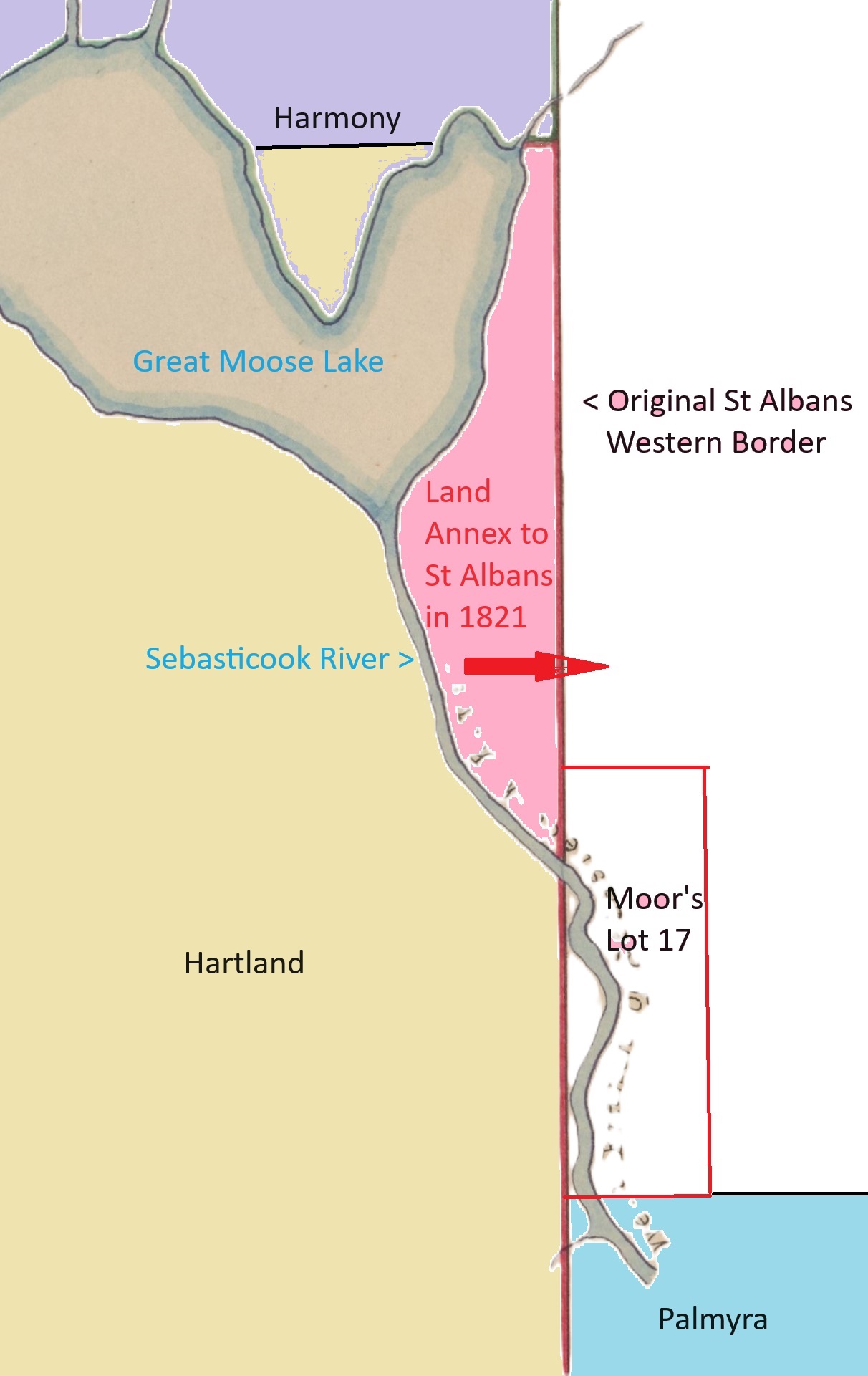
1821 Land Annexation to St Albans
*
Using a template of the 1883 map with future streets, this edited illustration below provides a visual reference for the village area borders following the 1821 Land Annexation including the section of William Moor’s Lot 17 sustained as part of St Albans. By the time of the annexation, Moor had already divided up most of his original lot into multiple properties sold to new settlers in the village area before he moved to Corinna in the mid-1820s. (See Maps page for further details)
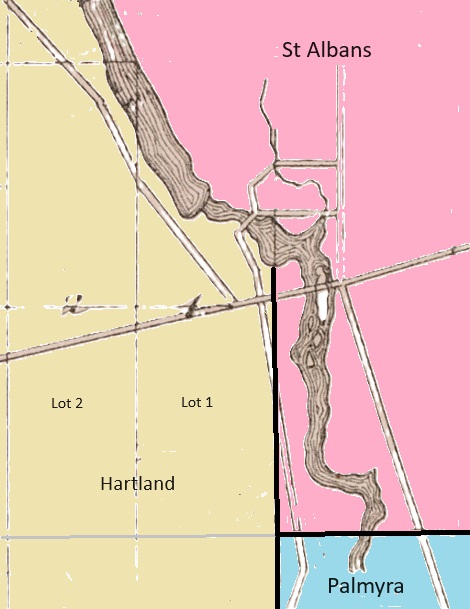
Illustrated Village Area Borders in 1821
*
In 1846, Hartland annexed a large section of land from St Albans consolidating the previously divided village area under one town. As seen on this illustrated future map of 1883 below as reference, the majority of the annexed land was William Moor’s entire original Lot 17. Also included was a small section of land to the west of Moor’s original lot bordering the Sebasticook River previously annexed from Hartland to St Albans in 1821 which would eventually become part of Upper Mill Street, North Street & Water Street. James Moor (1800-1873), son of William Moor, owned substantial amounts of property on both sides of the Sebasticook River near the Upper Dam area at the time.

Illustrated New Village Area Borders in 1846
*
North Street appears to have been first laid out around 1850 as an unnamed throughway leading west from what is now Commercial Street. The bridge across the Sebasticook River connecting it to Lower Mill Street was built later that same year in October according to early Town records. For many years, the short road between North Street and the Mill Street Bridge was known locally as Bridge Street before becoming part of Mill Street and often referred to as Upper Mill Street.
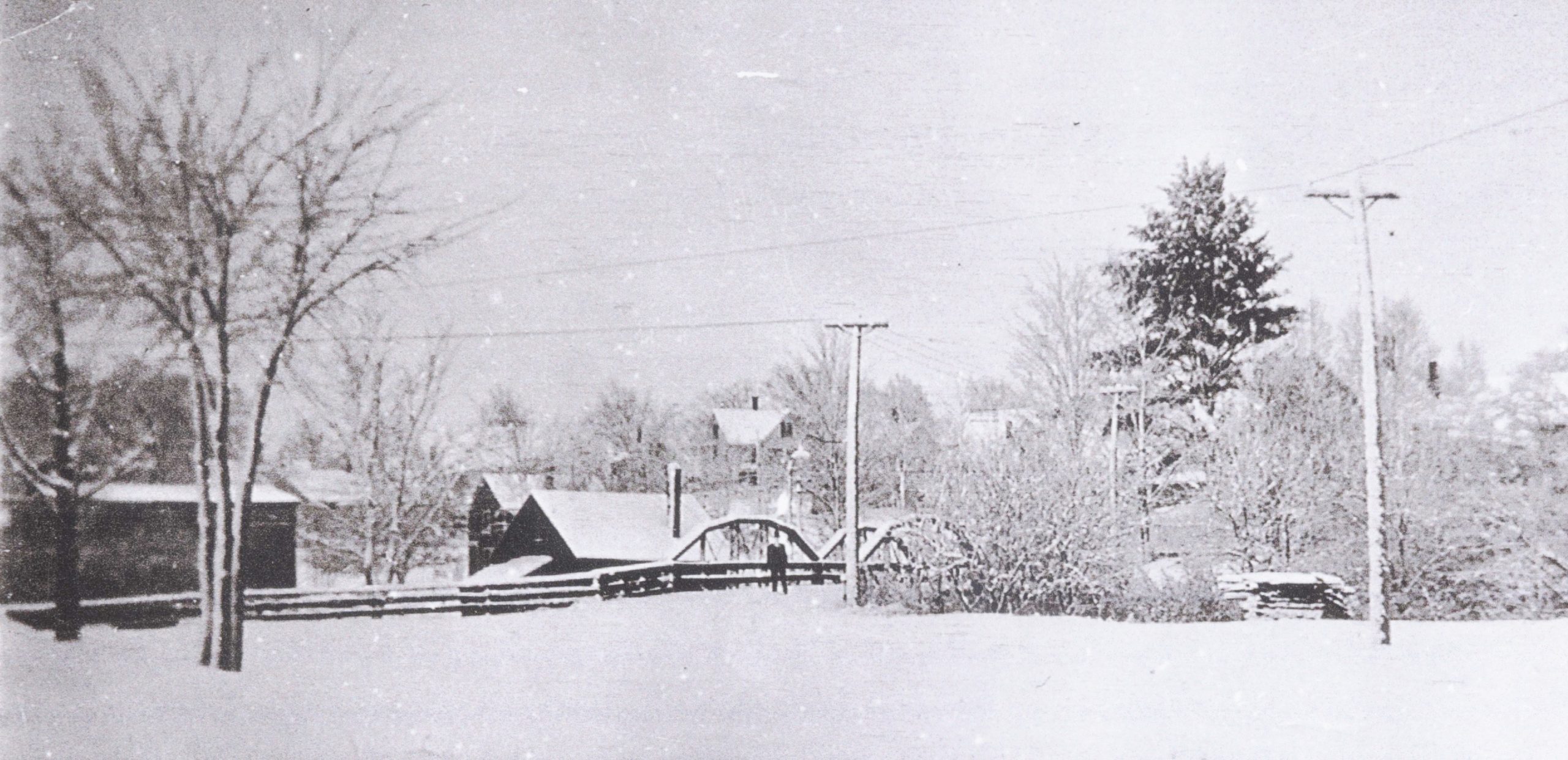
Looking across Upper Mill Street from the corner of North Street to Mill Street and Moore Street beyond the Mill Street Bridge – 1920s
*
Amasa J. Moor (1827-1899), the oldest son of James Moor & Dorcas Wiggin, built one the first known houses on North Street soon after he married Frances E. Lancey (1830-1894) in 1855. Frances is a granddaughter of Palmyra pioneer settler Samuel Lancey. Her brother Samuel F. Lancey married Amasa’s sister Clarinda Moor.
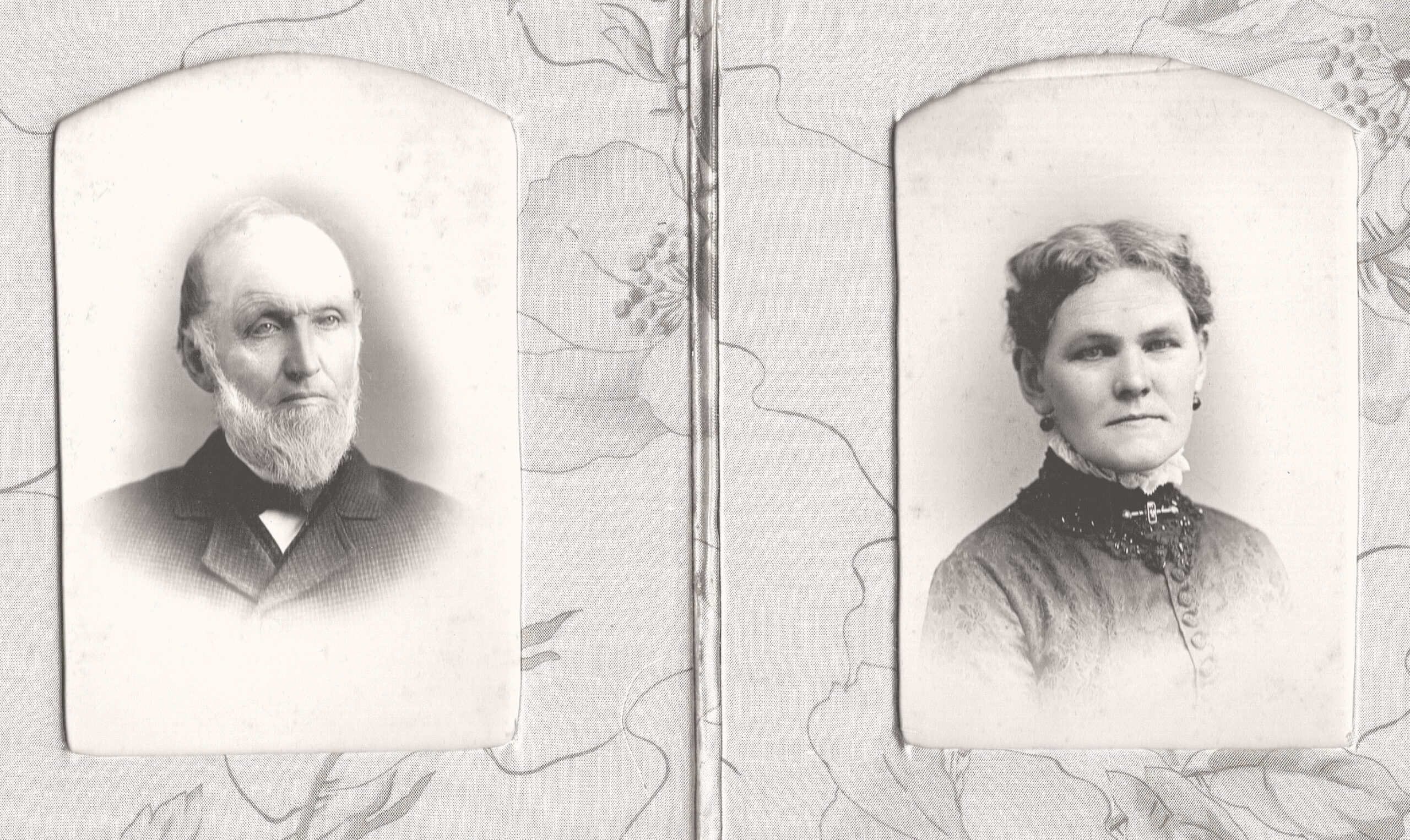
Amasa J. Moor & Frances E. Lancey
*
The house built by Amasa & Frances Moor was owned and occupied by their descendants for many decades following their deaths. Among their 3 children who lived there as adults was their daughter Florence (Moor) Smith (1858-1949) and their son Walter H. Moor/Moore (1856-1931). Walter’s son Merrill Moore lived there for about 10 years after he married in 1923. Florence’s daughter Helen Moor Smith (1889-1983) was the last of the family to live there.
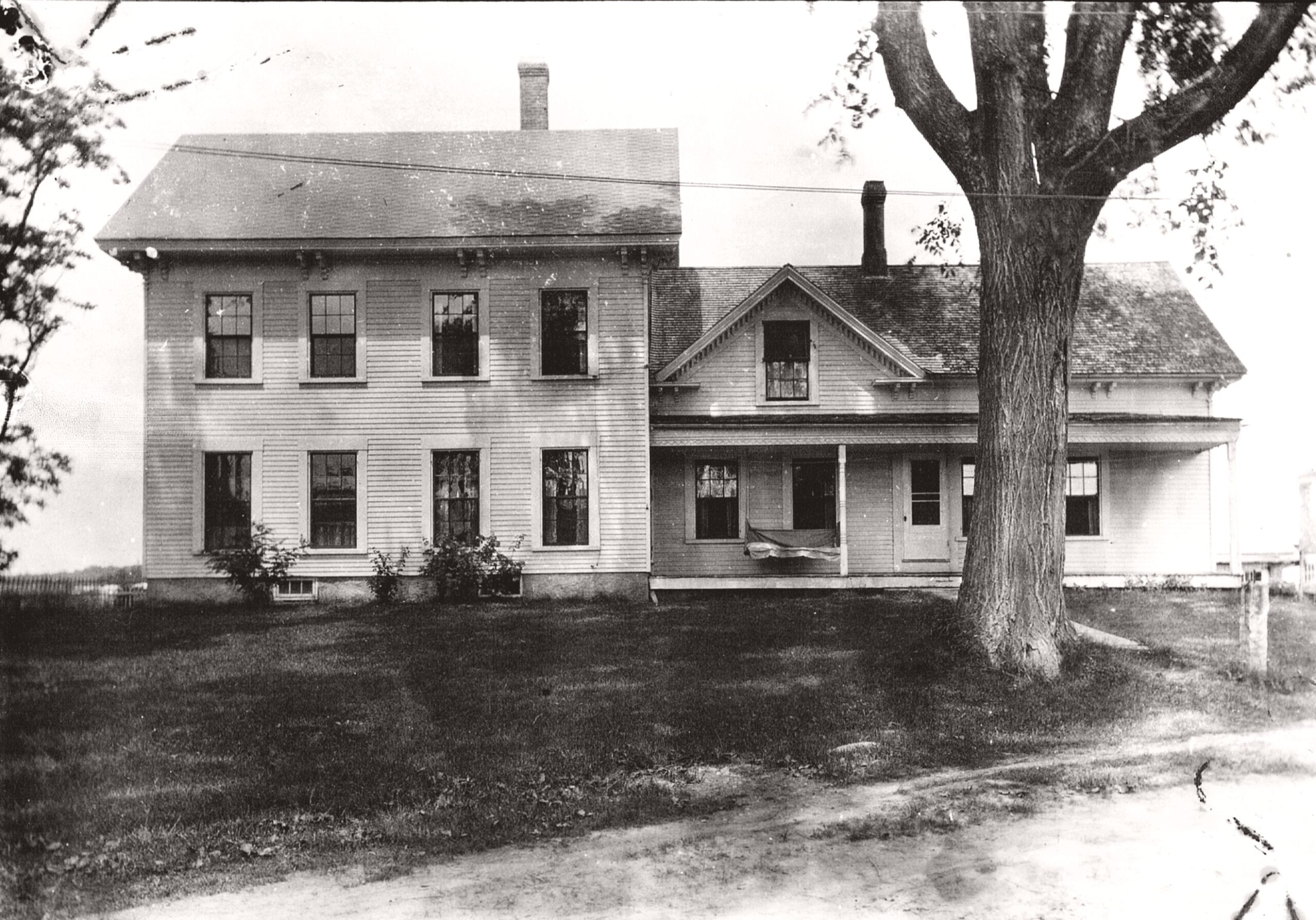
Former Amasa J. Moor House on North Street
*
A. J. Moor and his younger brother James Wiggin Moor began working at their father’s various wood working operations at the Upper Dam on what would become Moore Street as young men. They eventually took over the operations following his death in 1873 and soon joined by A. J.’s son Walter H. Moor in the family business.
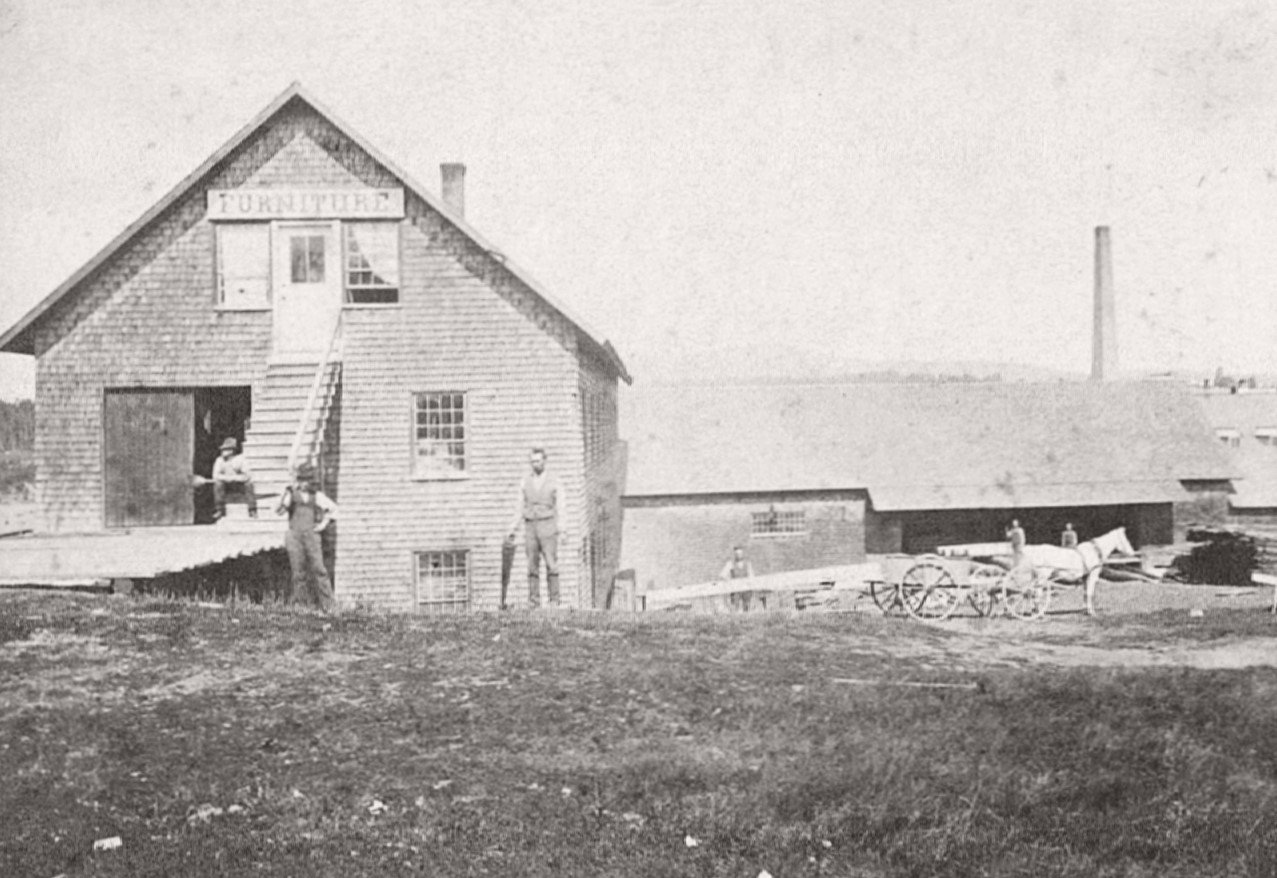
J. W. Moor Furniture Manufacturing & A. J. Moor Sawmill at Upper Dam – c1877
*
James Wiggin Moor (1830-1902) and his wife Martha Folsom (1831-1899) built the first known house on Lower Mill Street by 1860 located on the hill at the corner of future Moore Street. James would eventually operate a casket & coffin manufacturing in one building and a chair & settee furniture business in another separate building located behind his house at the family wood mill lot at the Upper Dam.
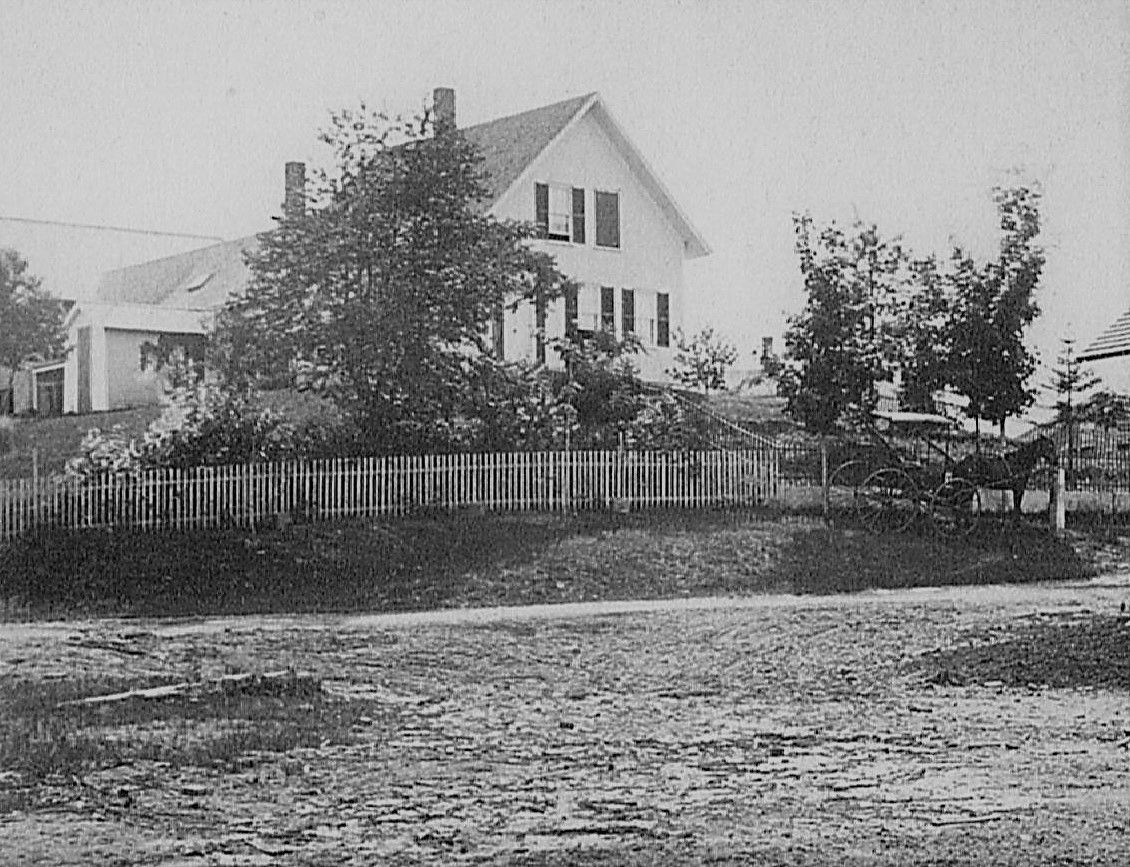
James W. Moor Residence at the corner of Lower Mill Street & Moore Street
*
Around 1856, Josiah Billings, Jr (1820-1904) came to Hartland with his family where he had purchased a large piece of property including water rights from James Moor at the Upper Dam on the northern corner of the dam where he built the 2nd tannery in Hartland. Born in Lancaster, Massachusetts, Josiah was educated at Groton Academy (now Lawrence Academy) in Massachusetts. He learned the tanning trade from his father who was a Tanner in Massachusetts. Soon after he married Lydia Ellen Monroe in 1846, they moved to Brownfield, Maine with their young son Edward E. Billings and were living there in 1850 where he was noted as a Tanner before moving to Hartland.
Along with his new tannery, Billings built a hide drying house, storehouse and a boarding house for some of his dozen or so employees on his new property. He also built his family home on the corner of North Street & Upper Mill Street. Billings also owned a house on Commercial Street which may have served as additional boarding for his employees.
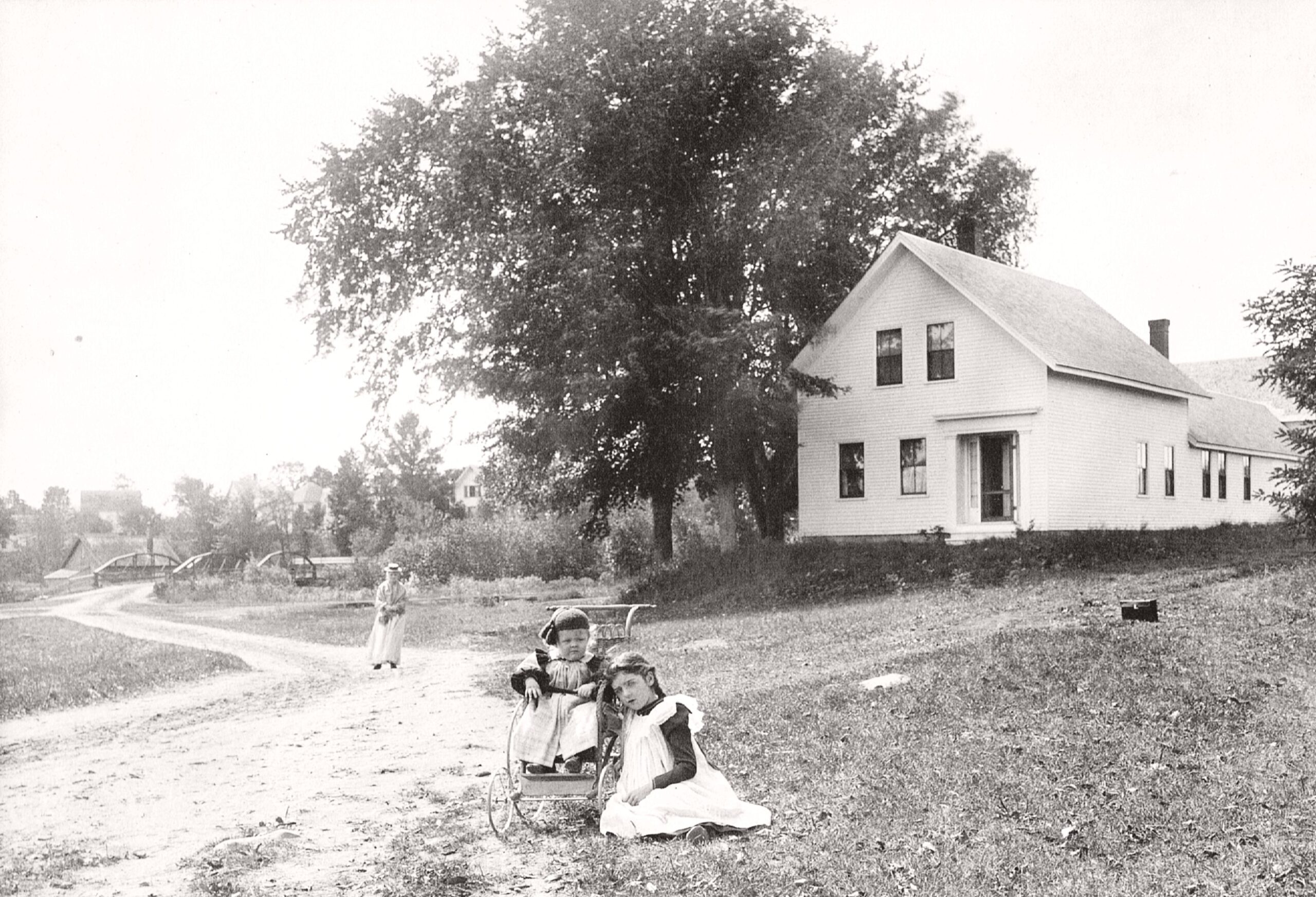
Former Billings Family Home – North Street – c1900
*
A 1945 article by Miss Helen Moor Smith included several historical references to the Billings home.
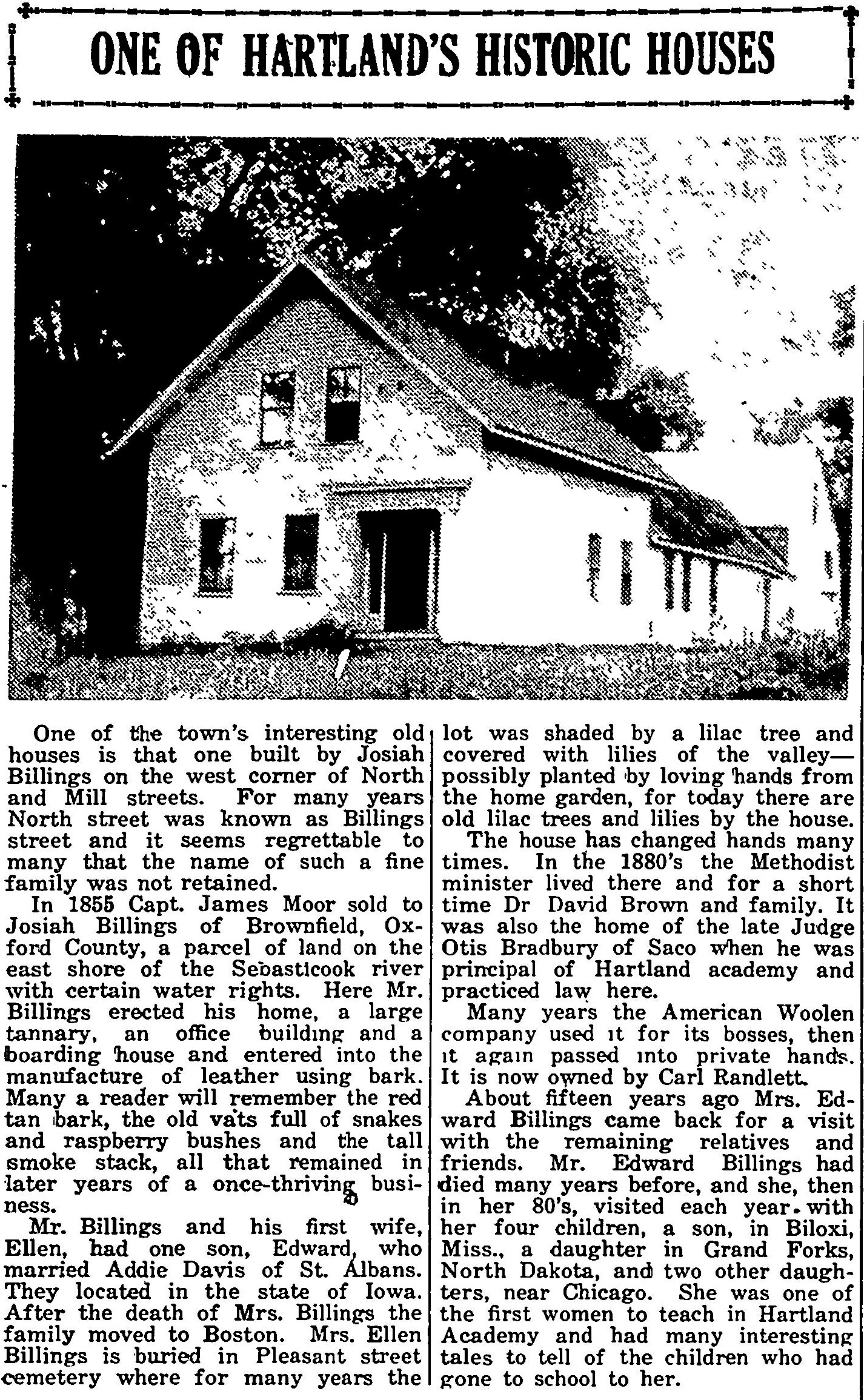
Helen Moor Smith Article – Pittsfield Advertiser – 1945
*
Up until 1897, North Street was the name used for what it now known as Commercial Street. What is now known as North Street was initially referred to as Tannery Road after the tannery was built before it came to be called Billings Street by 1860.
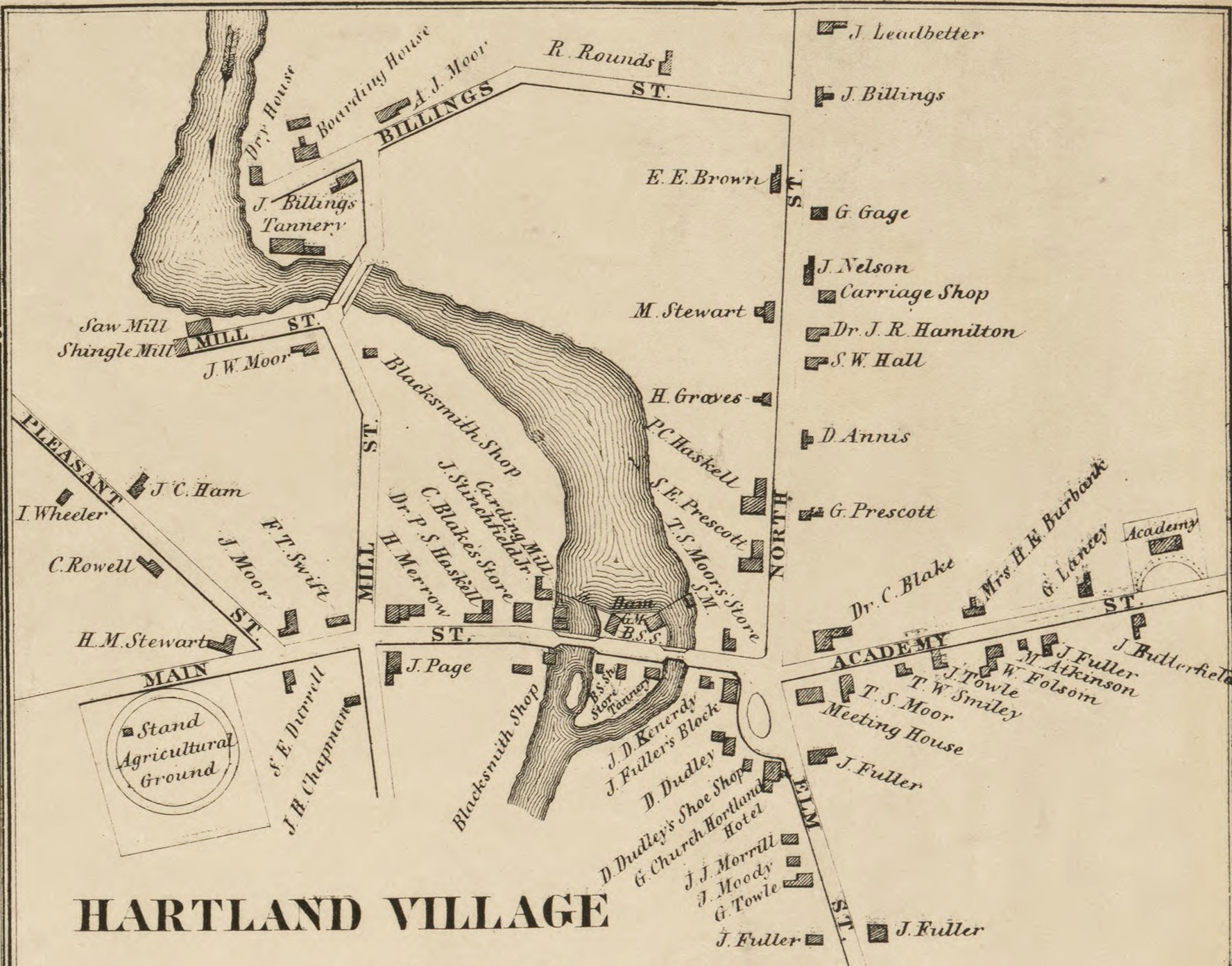
Hartland Village – 1860
*
Josiah Billings’ wife Lydia died in 1864 at 40yrs old and was interred at Ireland Cemetery. He remarried to Marcia Tibbetts of Exeter in 1866 while his son Edward moved to Rockford, Iowa and later married St Albans native Augusta Adelaide “Addie” Davis who had been a teacher at Hartland Academy before her family also moved to Iowa. Although most accounts note Billings tannery was very successful, in 1867 Josiah sold his tannery business and properties and left town with Marcia to join Edward in Iowa where he spent the rest of his life as a farmer until his death in 1904.
*
Greenville Jefferson Shaw (1843-1903) and his father Charles Shaw purchased the Billings Tannery which they operated as Shaw & Son Tannery as well as purchasing and operating tanneries in Burnham, Detroit & Plymouth under the same name. Greenville and his family had moved to Burnham at the time then to Detroit by 1870 and remained there until they closed all but their Hartland location in 1878 due to a bark shortage.
Bark, and especially hemlock bark which had been abundant locally until the late 1870s, was a key component of the tanning process at the time. As noted in an 1873 newspaper article, Shaw was consuming some two thousand cord of bark annually at his tannery operation in Hartland.
In the early 1880s, Greenville built Maple Place Farm, so called by Shaw, on an 8 acre lot on Commercial Street now commonly known as the Century House and moved his family to Hartland where he operated his remaining tannery and continued breeding thoroughbred trotters. Around the same time, he also purchased a 640 acre farm in Stetson which he renamed as Cream Brook Farm where he also raised and bred horses as well as premium cattle while living at his new Hartland residence. Shaw sold Cream Brook Farm in 1886 to concentrate on his other business affairs but maintained his trotter breeding operations at Maple Place Farm.
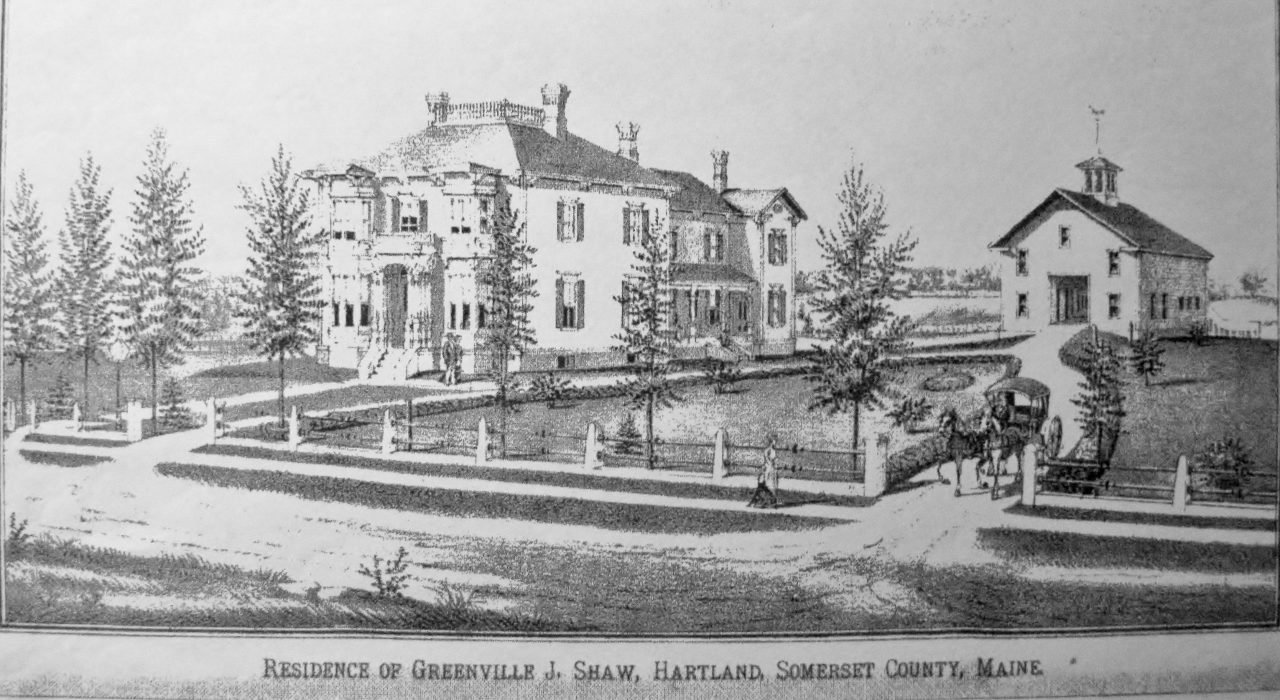
Maple Place Farm – Commercial Street – c1882
*
“Greenville Jefferson Shaw was born in the State of Massachusetts in 1843. When he was eight years of age he came with his family to Penobscot County and settled at Dexter, where he received a common school education. He also attended the Maine State Seminary at Lewiston for three terms, and is a graduate of Eastman’s Business College of Poughkeepsie, New York. At the age of twenty he took charge of the tannery at Vernon, New York where he had charge of eighteen men and in 1866 he purchased one half interest in the business. In 1867 he purchased the tannery in Hartland in company with his father. In the winter of 1868 and 1869, in company with his father, he also purchased the tanneries at Detroit and Plymouth, which made four tanneries and eighty men under his immediate charge at one time. In 1878, during the scarcity of bark, he was obliged to close three of his tanneries, and at present operates only the one at Hartland, where he has fifteen men engaged.” – History of Penobscot County, Maine – 1882
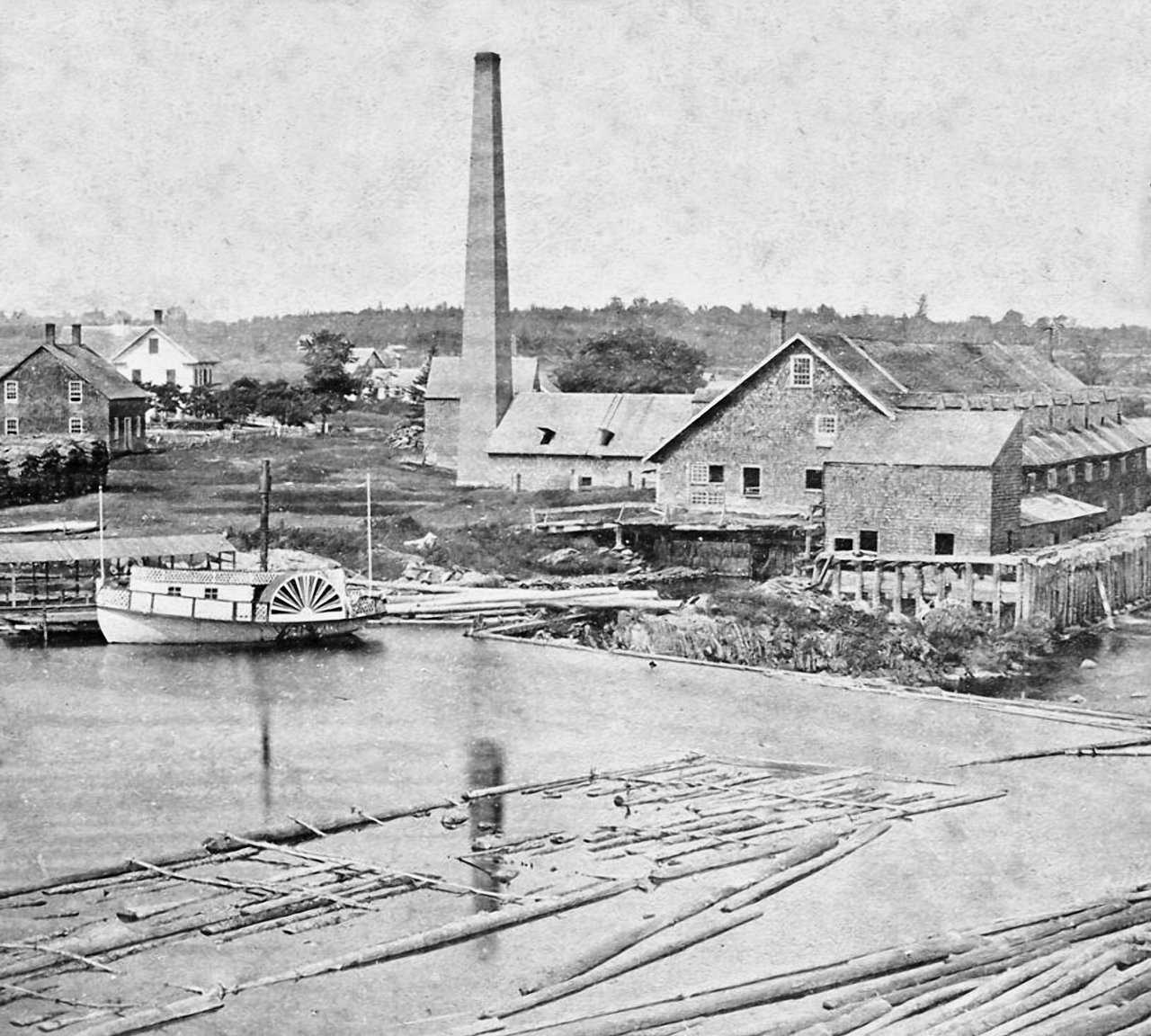
Former Billings Tannery as Shaw & Son Tannery at the Upper Dam – c1877
*
Another article by Helen Smith referenced several details of the tannery seen in the photo above and other existing North Street residences.
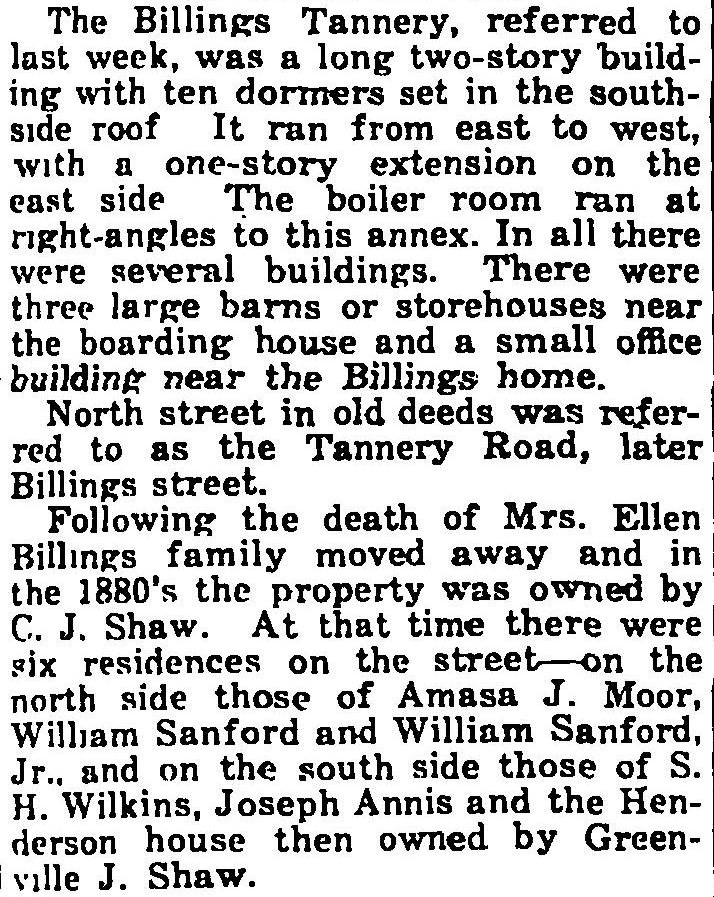
Helen Moor Smith Article – Pittsfield Advertiser – 1945
*
By 1883, there were a handful of houses on North Street as well as the Shaw & Son Tannery and its supporting buildings.
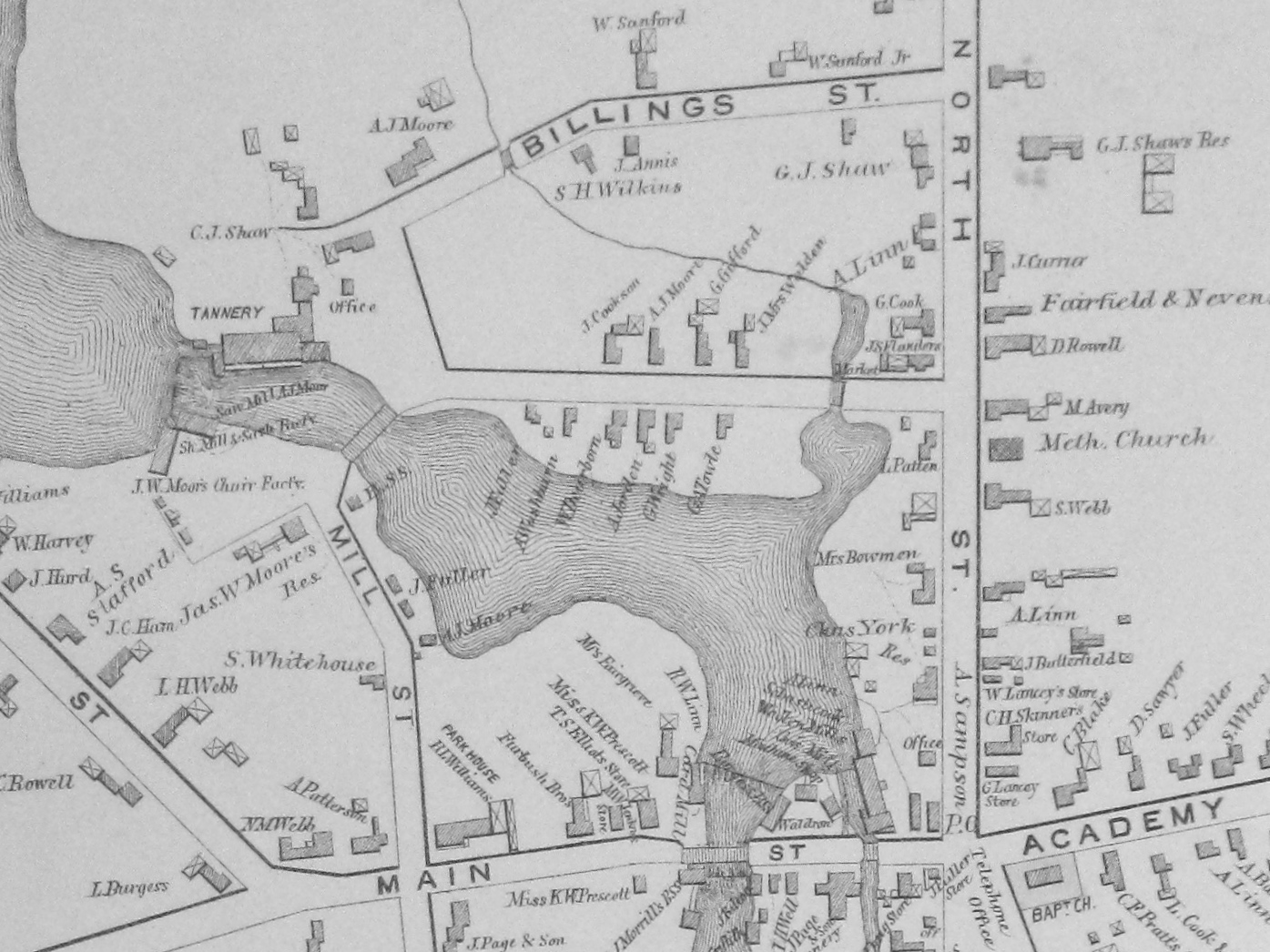
Hartland Village – 1883
*
As noted in the 1945 Billings house article above, Dr. David Brown (1832-1900) and his wife Margaret Guy came from Scotland to Hartland with their 5 children in 1883 where they resided on the corner of Mill Street & North Street at the former Billings house for a time. He continued his medical practice in Hartland where he was listed as a physician from 1885 until his death in 1900. Their son Dr. John Ferguson Brown also served as a physician in Hartland from 1889 to 1893 before moving to Milwaukee, Wisconsin. Their daughter Margaret Guy Brown married 2nd to Henry L. Smith and operated a clothing store on Commercial Street in the early 1900s. Their other daughter Myra Brown married Charles L. Moor, the youngest son of Amasa J. Moor in 1891. Dr. Brown and his wife are interred at Ireland Cemetery while daughters Margaret Smith & Myra Moor are interred at Pine Grove Cemetery. Margaret & Henry’s daughter Jean Brown Smith married Birney James Moore in 1918.
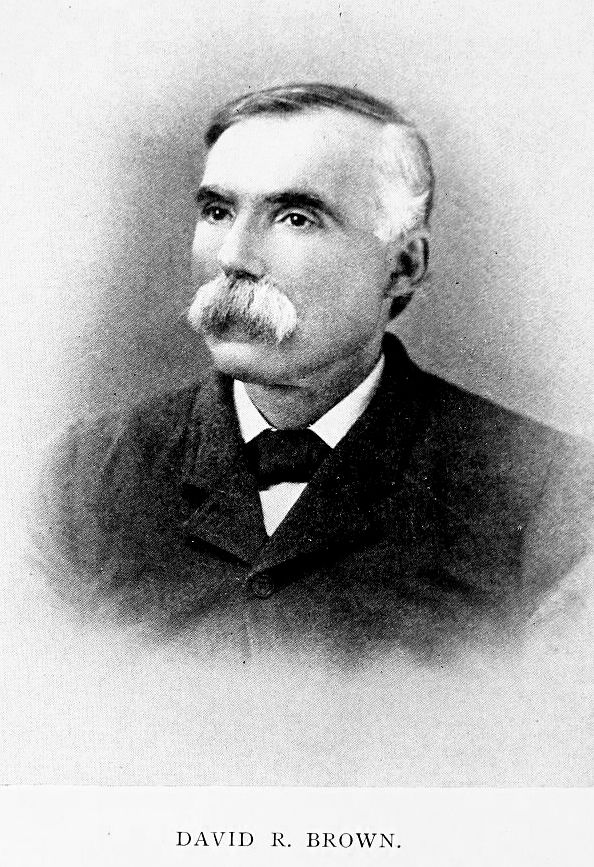
(Photo from “Biographical Review: Containing Life Sketches of Leading Citizens of Somerset, Piscataquis, Hancock, Washington, and Aroostook Counties, Maine” by Biographical Review Publishing Company, Boston, MA; Publication Date 1898)
*
An ongoing bark shortage remained a constant issue for Greenville Shaw’s tannery operations for several years and in 1884 he announced plans in the Pittsfield Advertiser to close his tannery at the end of the year. However, he was able to remain in business a few more years until the Great Flood of 1887 caused major damage to numerous Hartland industries along the Sebasticook River including extensive damage to his tannery as noted by the Pittsfield Advertiser, “The Boat House at the Upper Dam and a wing dam connecting to the end of Shaw’s Tannery were carried away.”
The heavy damage incurred from the flood was likely the final blow in the tannery’s eventual demise as Shaw ceased operations and left the tanning business soon after to focus on his trotter breeding operations at Maple Place Farm on Commercial Street. Shaw remained in Hartland into the late 1890s before eventually moving to Bath in 1900 where he passed away in 1903.
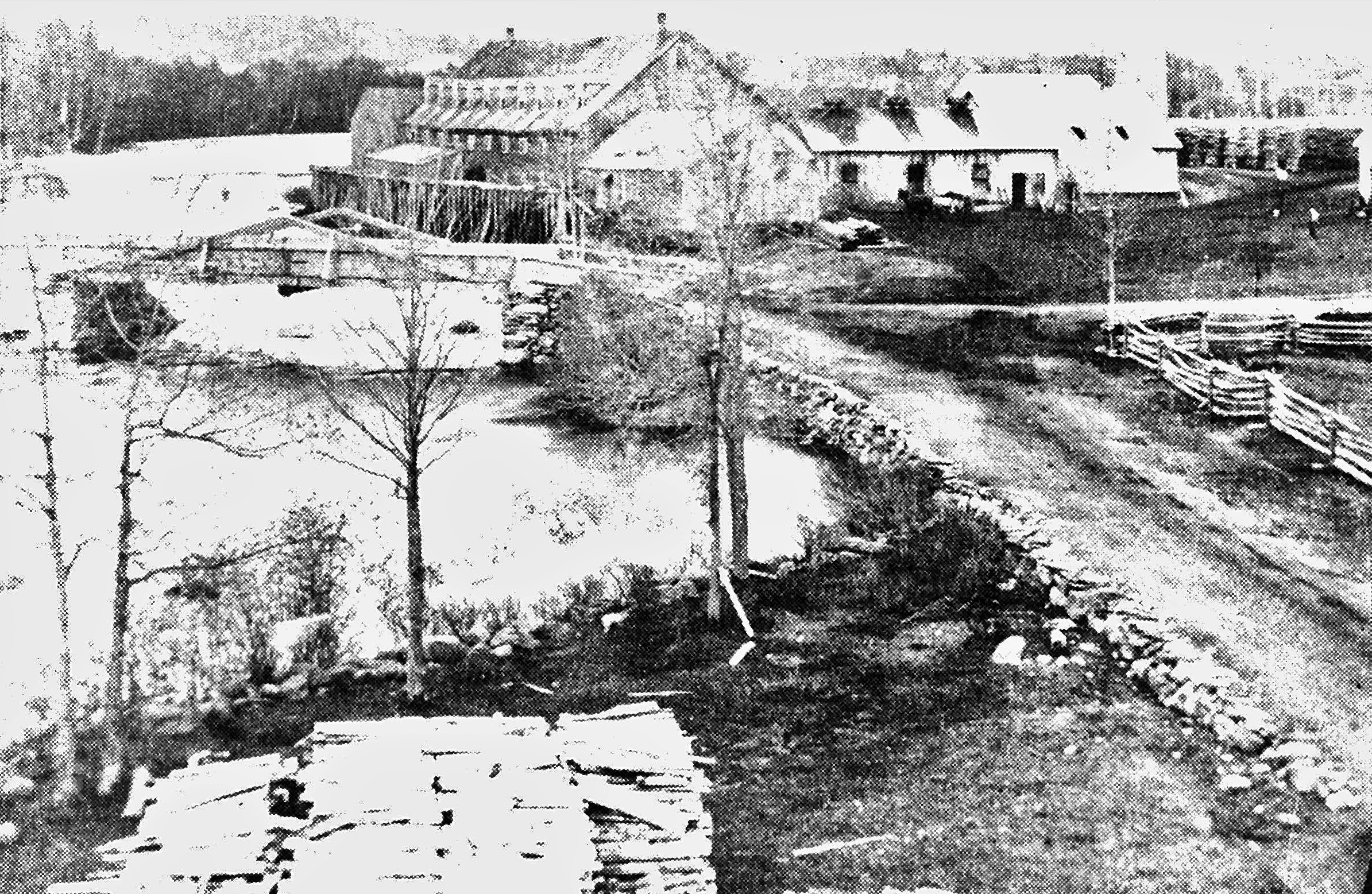
Shaw & Son Tannery at the Upper Dam seen from Water Street – c1885
*
Several of Greenville J. Shaw’s real estate holdings in Hartland including his former tannery’s remaining support buildings and their respective lots on North Street were purchased by the Linn Manufacturing Company in 1898. This also included the former Josiah Billings home.
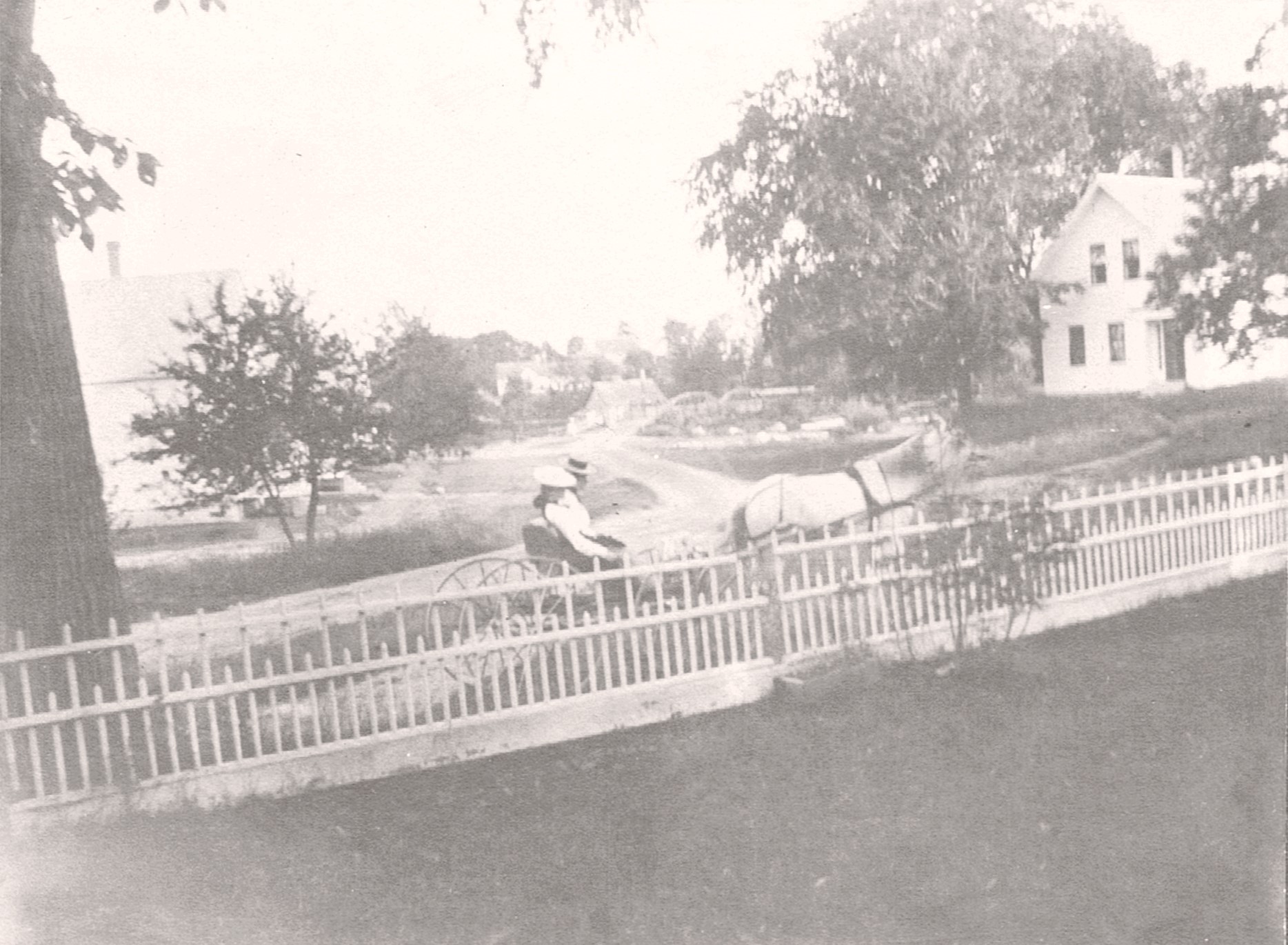
Former Josiah Billings Home to the right seen from the former A. J. Moor Home – Early 1900s
*
At the 1897 Town Meeting, the citizens of Hartland voted to accept recommended street names in the village. While most of them retained their original names, a couple of major changes included Billings Street as noted, “From A. J. Moore’s to said Commercial Street going East; North Street”. The street formerly known as North Street became Commercial Street. It is unclear when or why North Street became known as “Upper Georgetown” but likely it was a colloquial reference introduced by locals to distinguish it from the original “Lower Georgetown” aka Water Street.
*
Soon after the demolition of the Shaw Tannery by 1910, Thomas Fuller Randlett (1869-1955) leased one of the former tannery support buildings which was still standing near the Sebasticook River behind the old boat landing and began operating his ice business.
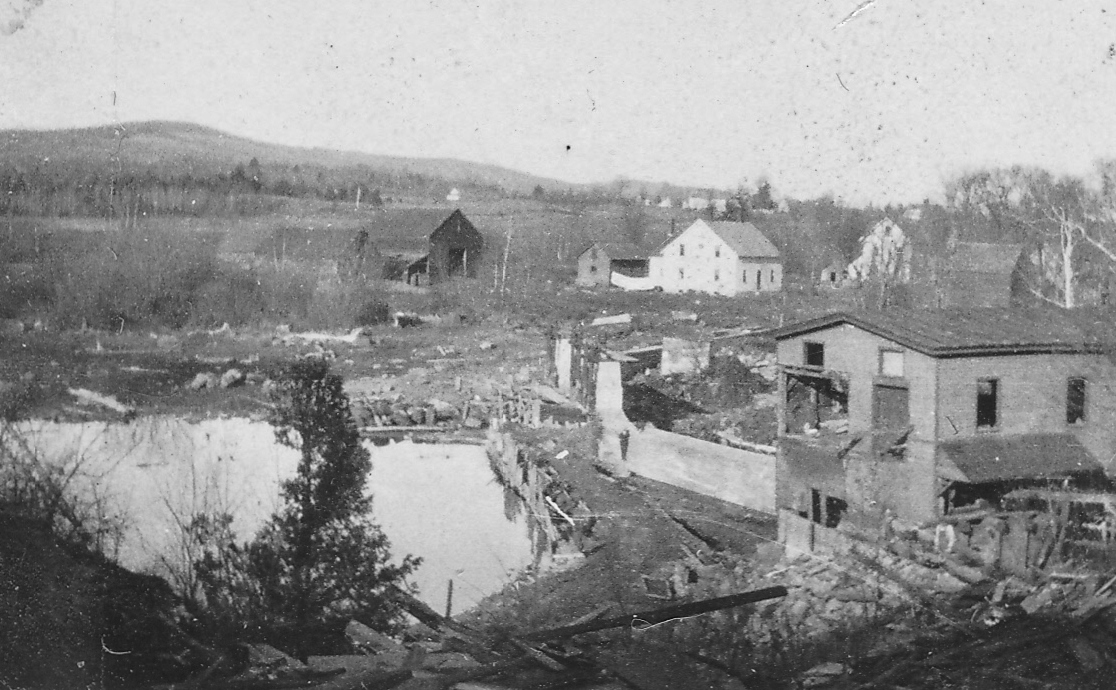
Thomas Fuller Randlett Ice House (Dark building across river on left) – c1912
*
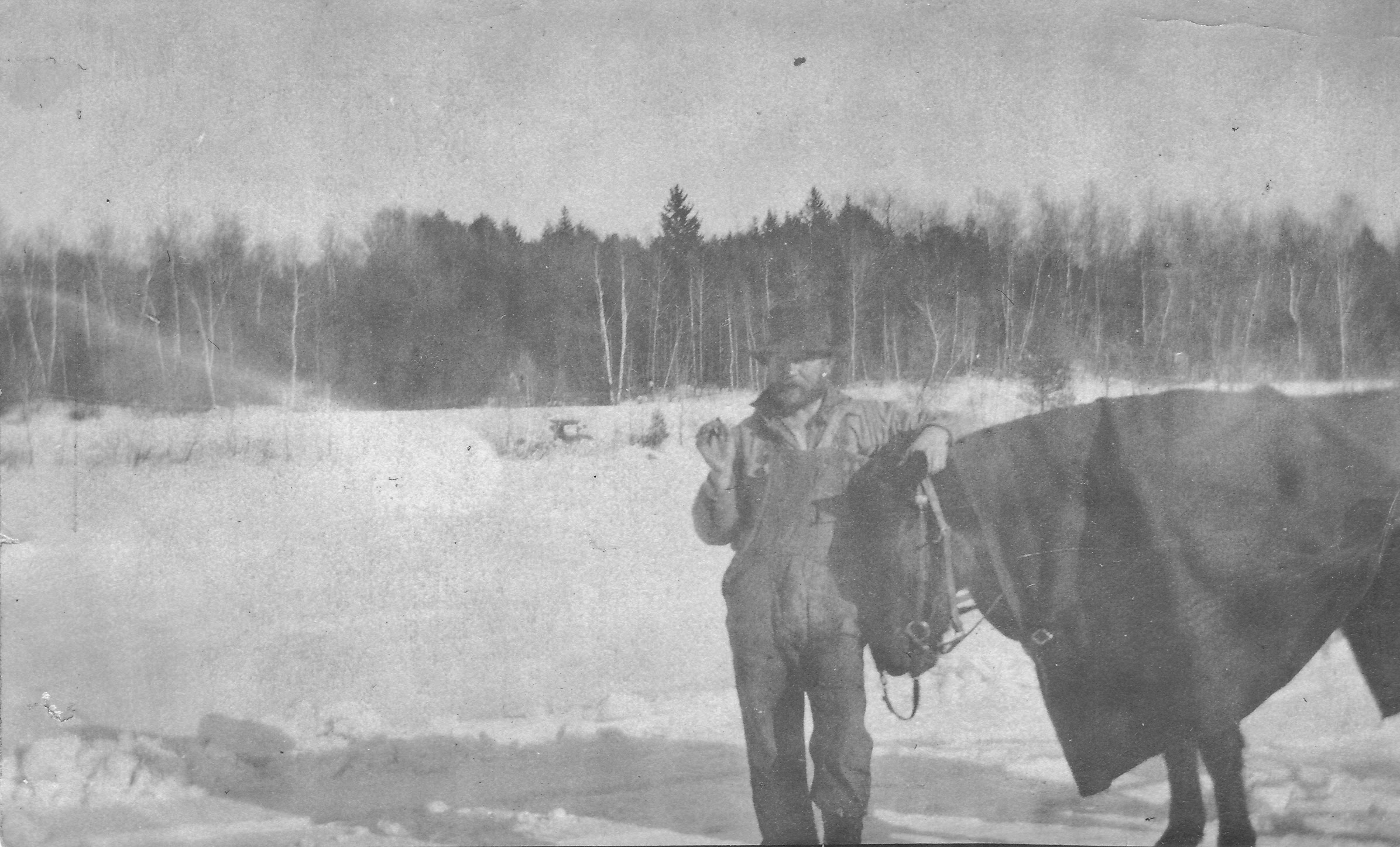
Thomas Fuller Randlett cutting ice on the Sebasticook River
*
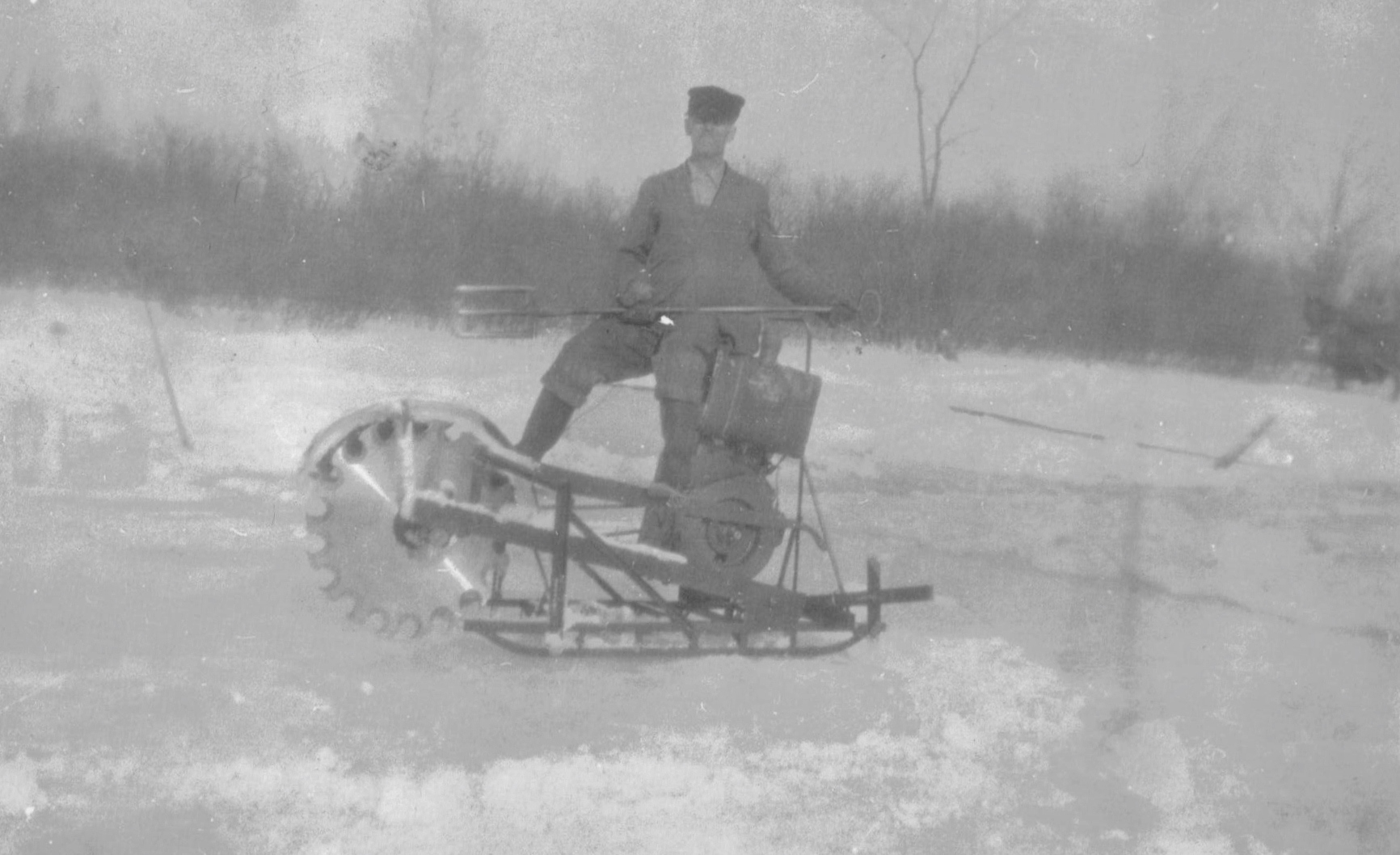
Thomas Fuller Randlett with his new motorized Ice Cutter on the Sebasticook River
*
When the Upper Dam gave way in late April during the Great Flood of 1923, all of Upper Mill Street & Water Street were overwhelmed by massive flooding as well as the Lower Dam area on Main Street. Most of the houses on the western side of North Street near the dam were spared major damages although flood waters crested just short of many of their homes.
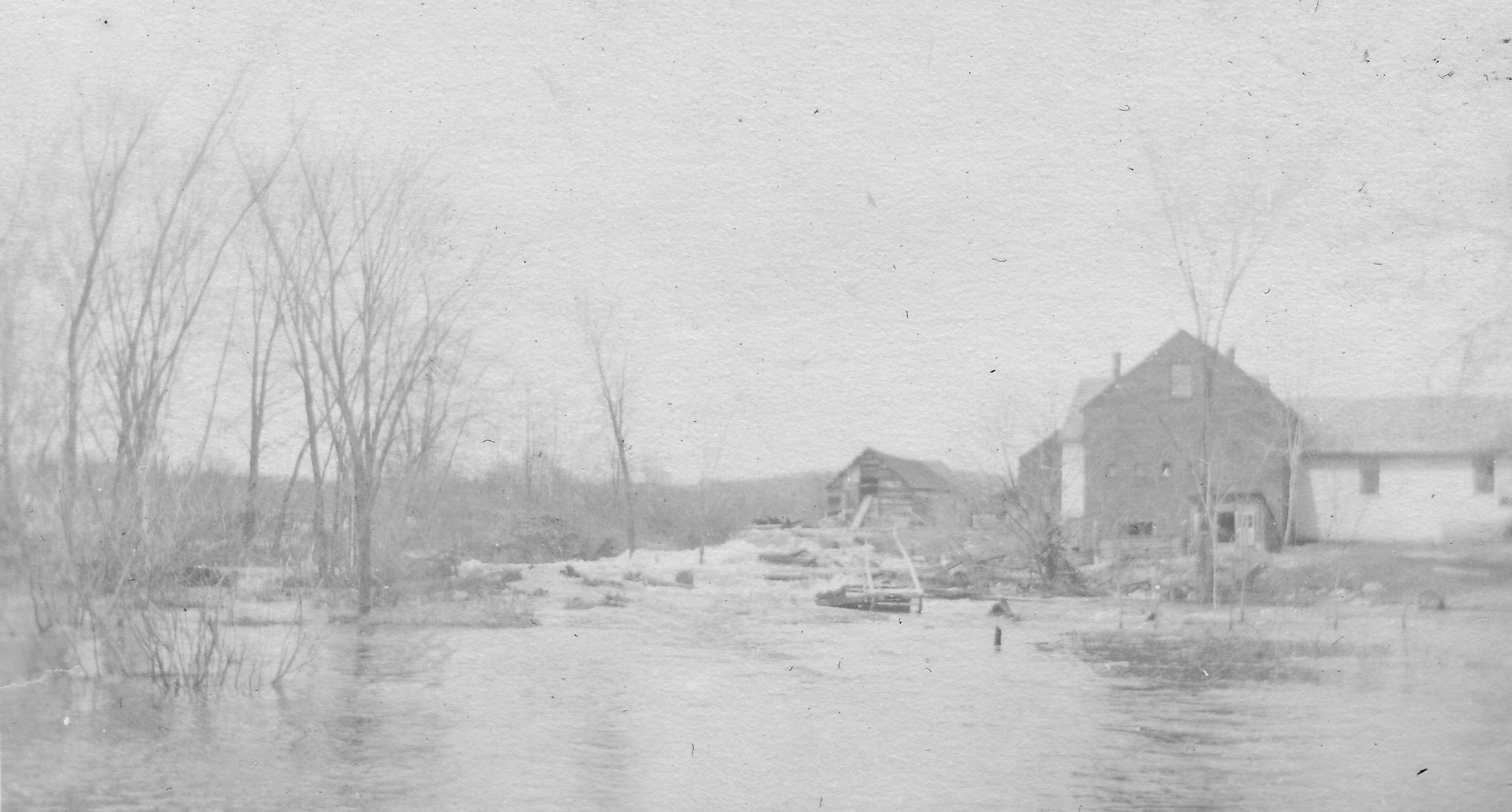
Flood Waters flowing past the Former Billings Home on North Street – Great Flood of 1923
*
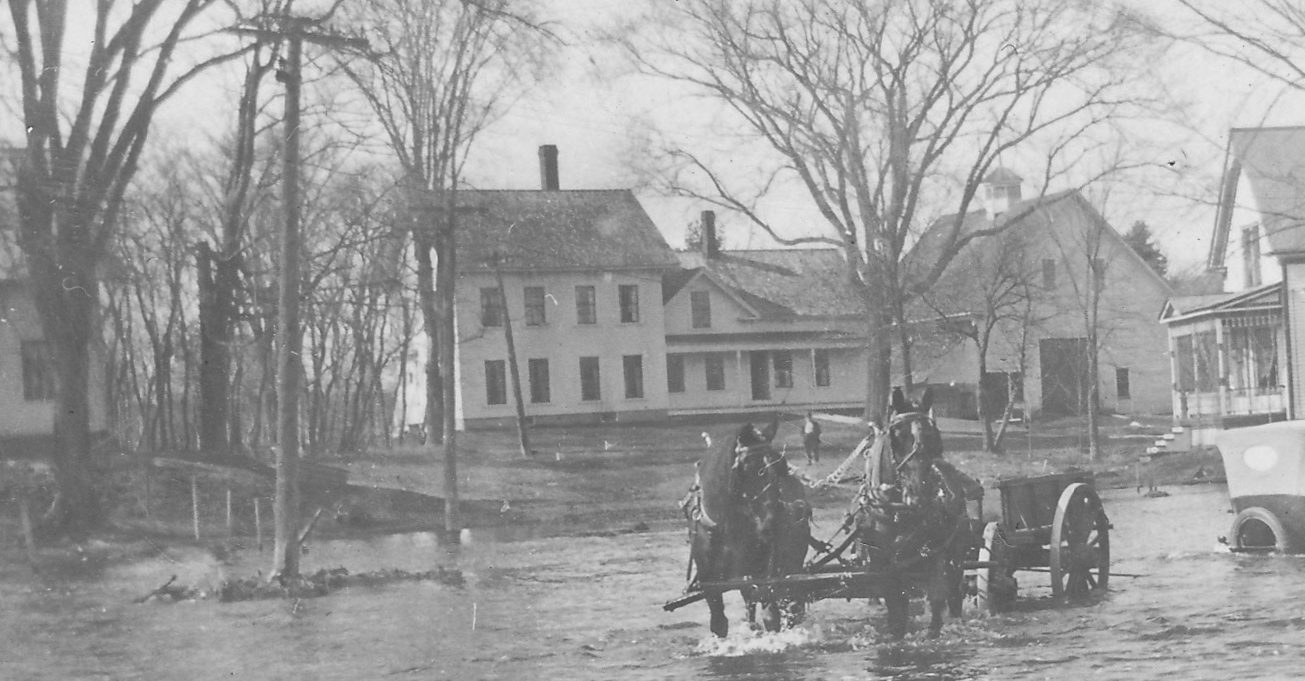
Walter H. Moore Home seen from Upper Mill Street – Great Flood of 1923
*
Although most of North Street was spared from flood waters, the area around the North Street Bridge was overwhelmed by overflow from the smaller northerly outlet of Great Moose Lake engulfing the bridge area before adding to the flooding waters from the Upper Dam onto Water Street.
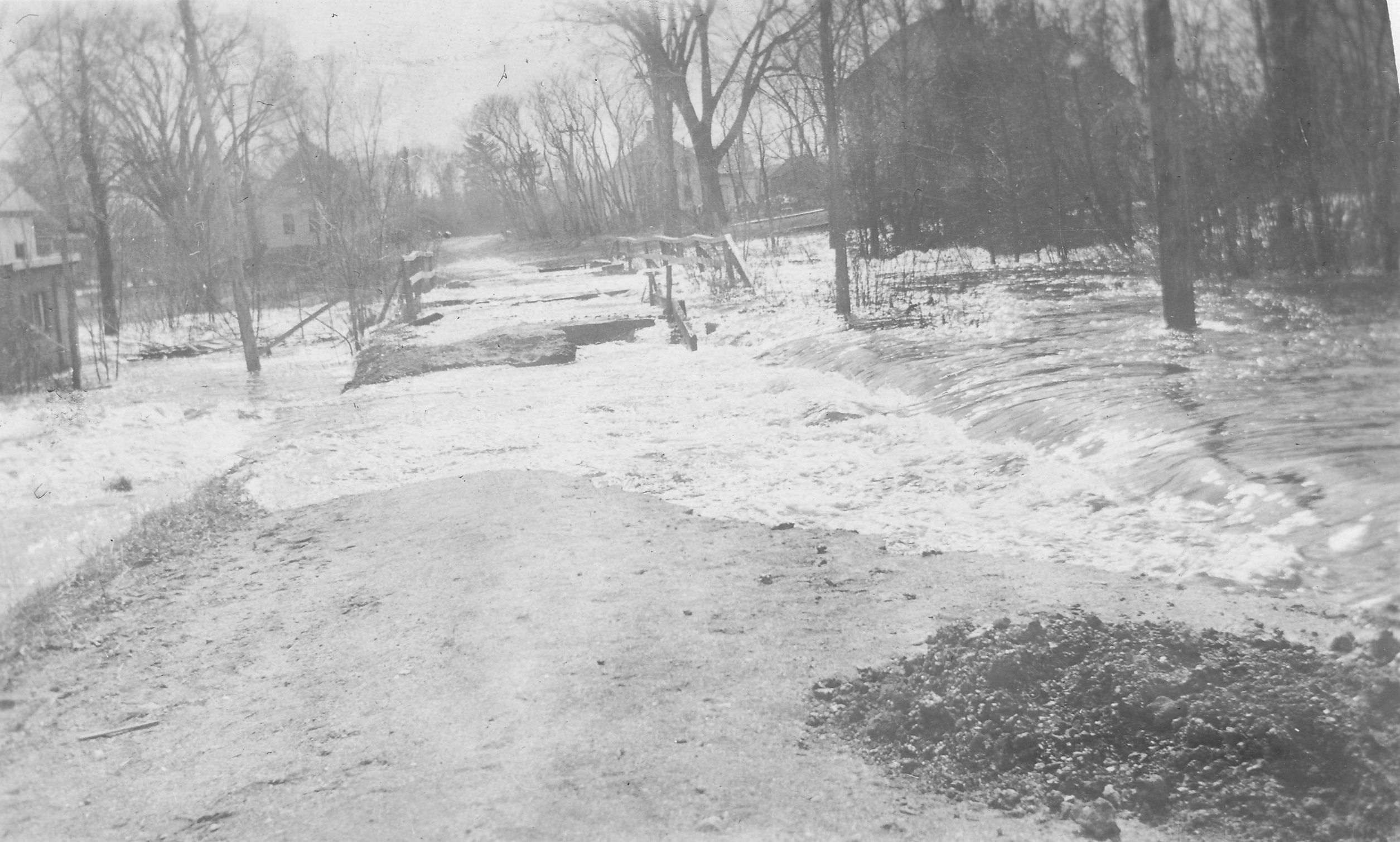
North Street Bridge – Great Flood of 1923
*
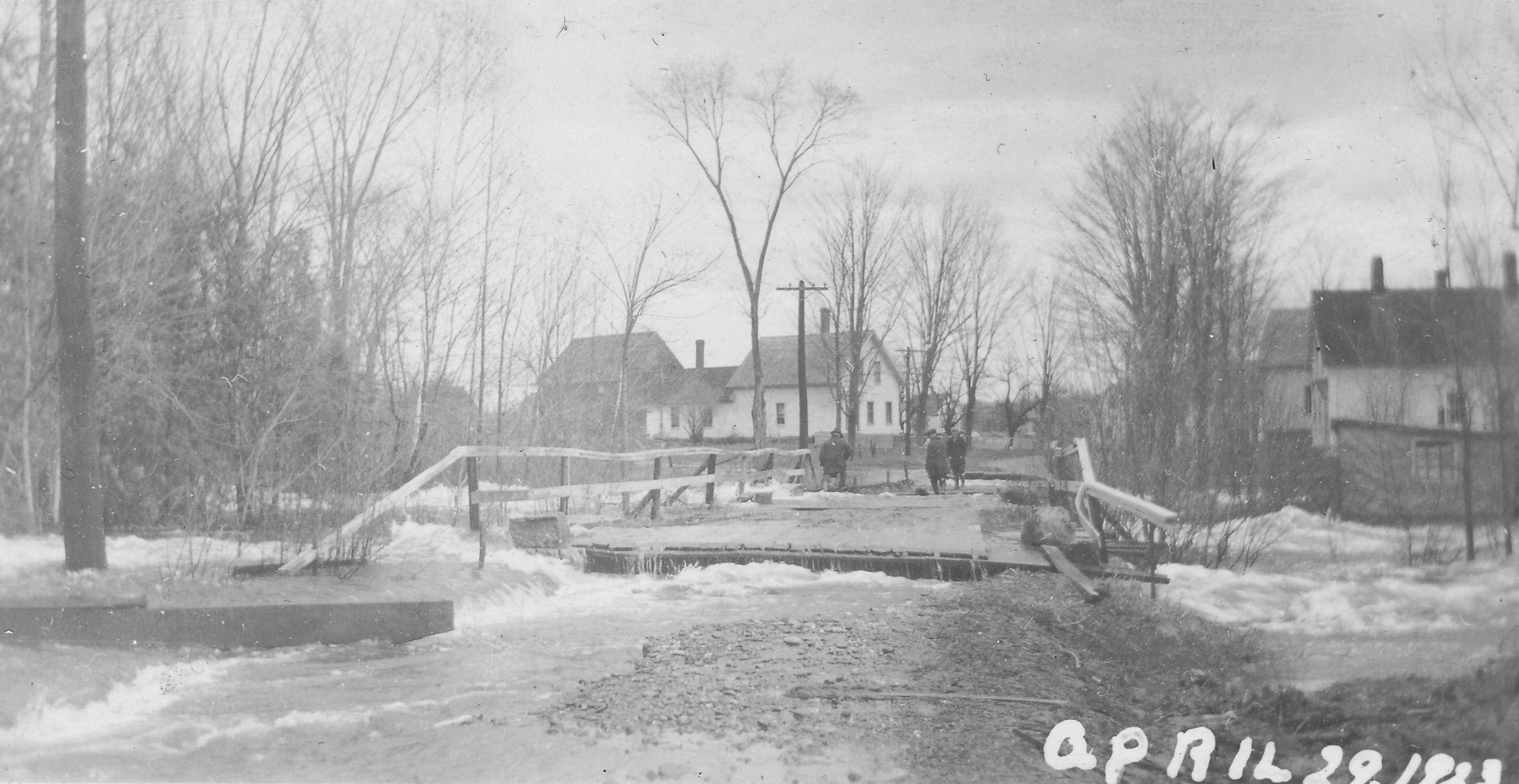
North Street Bridge – Great Flood of 1923
*
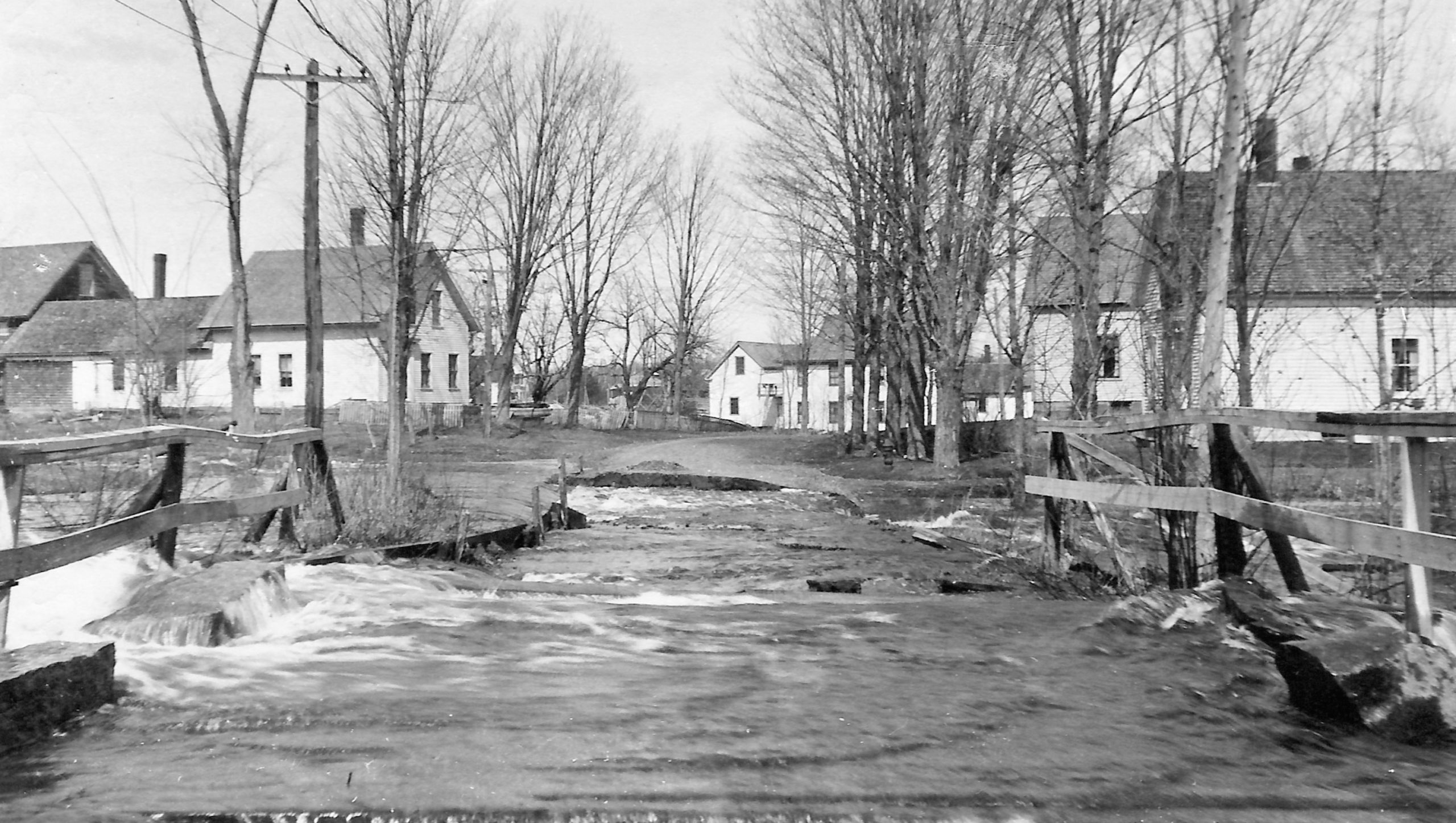
North Street Bridge – Great Flood of 1923
*
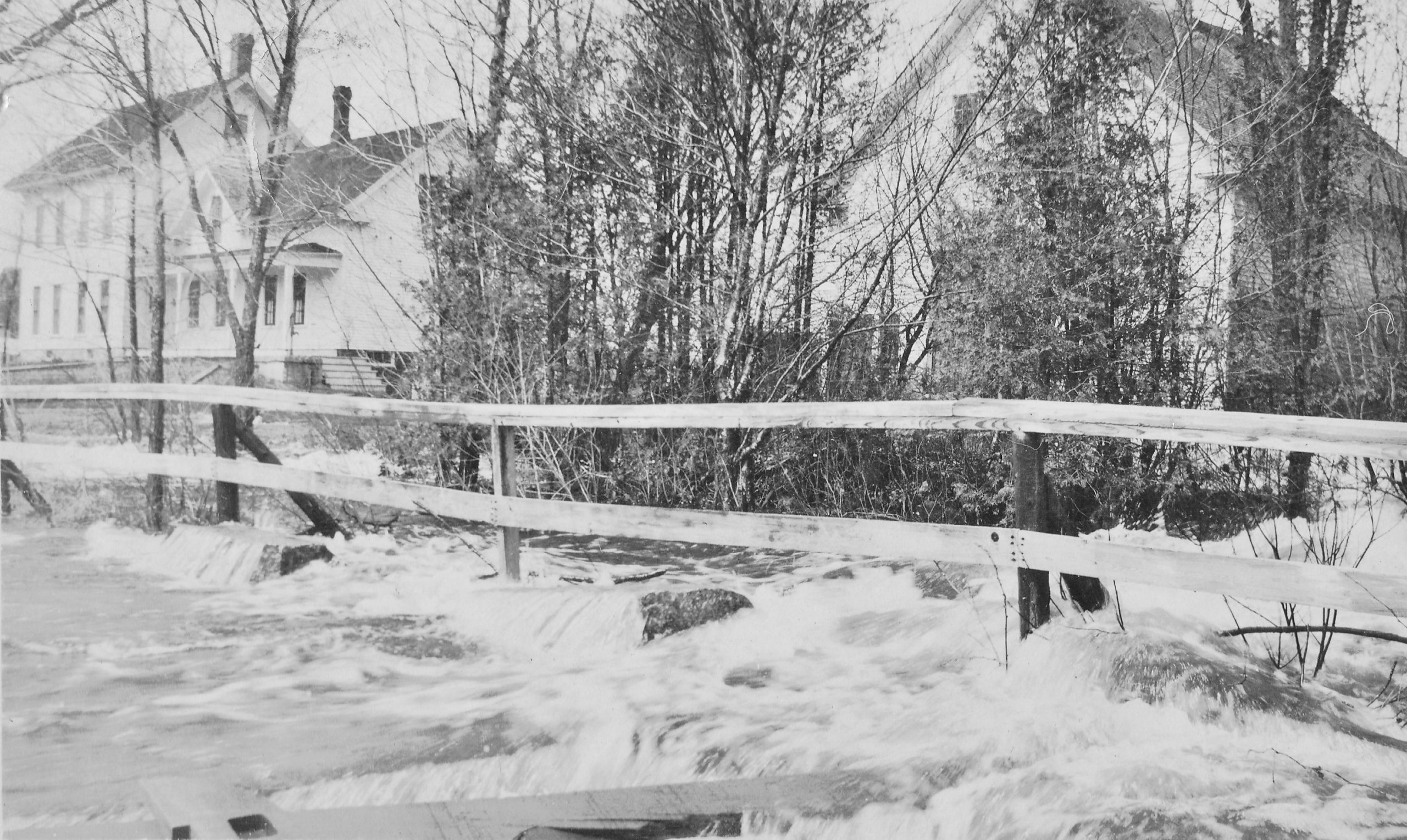
North Street Bridge – Great Flood of 1923
*
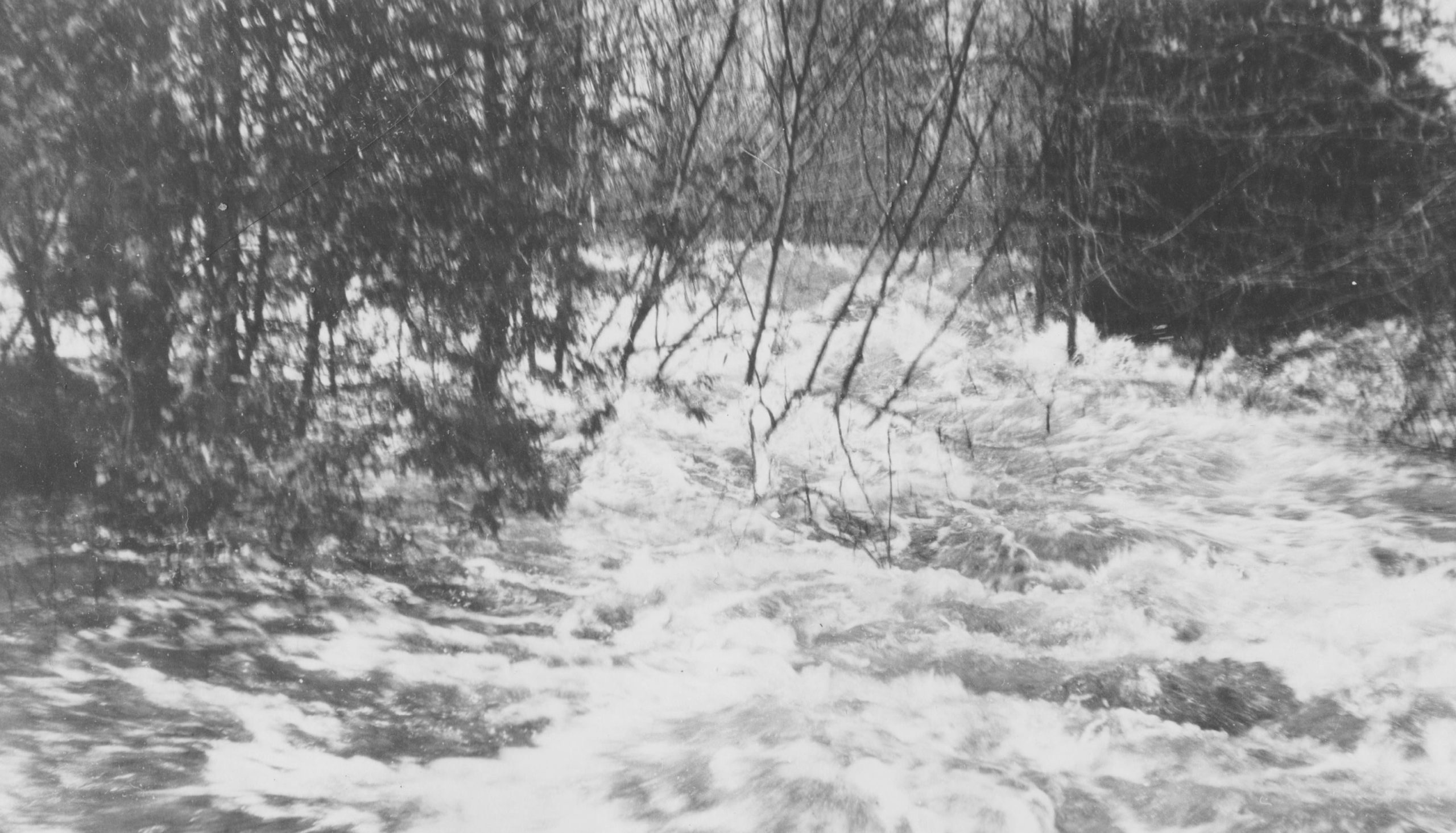
Flood Waters from North Street Outlet rushing across to Water Street – Great Flood of 1923
*
Walter Henry Moore (1856-1931) had joined his father Amasa J. Moor and his uncle James W. Moor in the family wood working operations on future Moore Street at the Upper Dam as a young man by the mid-1870s. In 1890, Walter married Florence Belle Page (1865-1909) and had 2 sons, Merrill Amasa Moore (1897-1976) & James Folsom Moore (1900-1918). Following his father and uncle’s respective deaths in 1899 and 1902, Walter began to disengage from the wood working business as an operator and sold or leased the remaining buildings on Moore Street in the early 1900s. He was widowed in 1909 following Florence’s death at 44yrs old. In 1918, their son James would succumb to pneumonia during his first term at Montclair Military Academy in New Jersey at 18yrs old.
*
As a young man, Merrill Amasa Moore attended Hartland Academy for a couple of years before transferring to Montclair Military Academy in New Jersey where he graduated in 1918. He had just begun attending West Point Military Academy when he served during World War I with the Academy’s U. S. Corps of Cadets from 1918 until his honorable discharge in 1919. Merrill returned to Hartland where he was living with his widowed father in 1920. On March 3, 1923, he married Bertha “Buff” Emily Gilliatt (1900-1982). They first lived with his father where their 3 children, Margaret, Helen & Douglas, would be born before they built a new home in 1933.
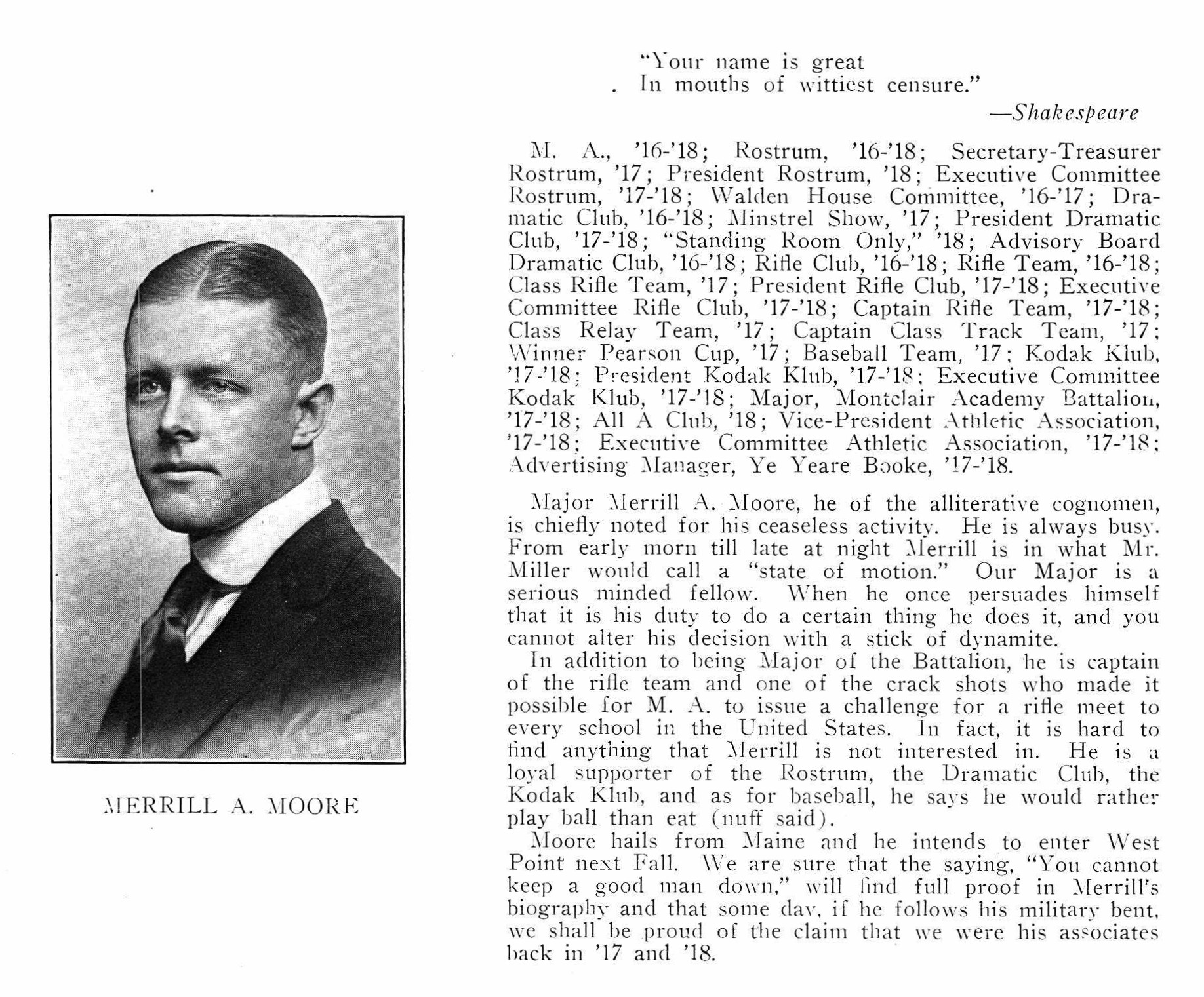
Montclair Military Academy – Class of 1918
*
In late May of 1923, Walter H. Moore returned to the wood working business when he opened a new mill in the barn next to his late father’s North Street house with his newly wedded son Merrill operating as “W. H. Moore & Son Woodworking”. Later that same year in September, Walter remarried to the widow Abbie (Harding) Brown.
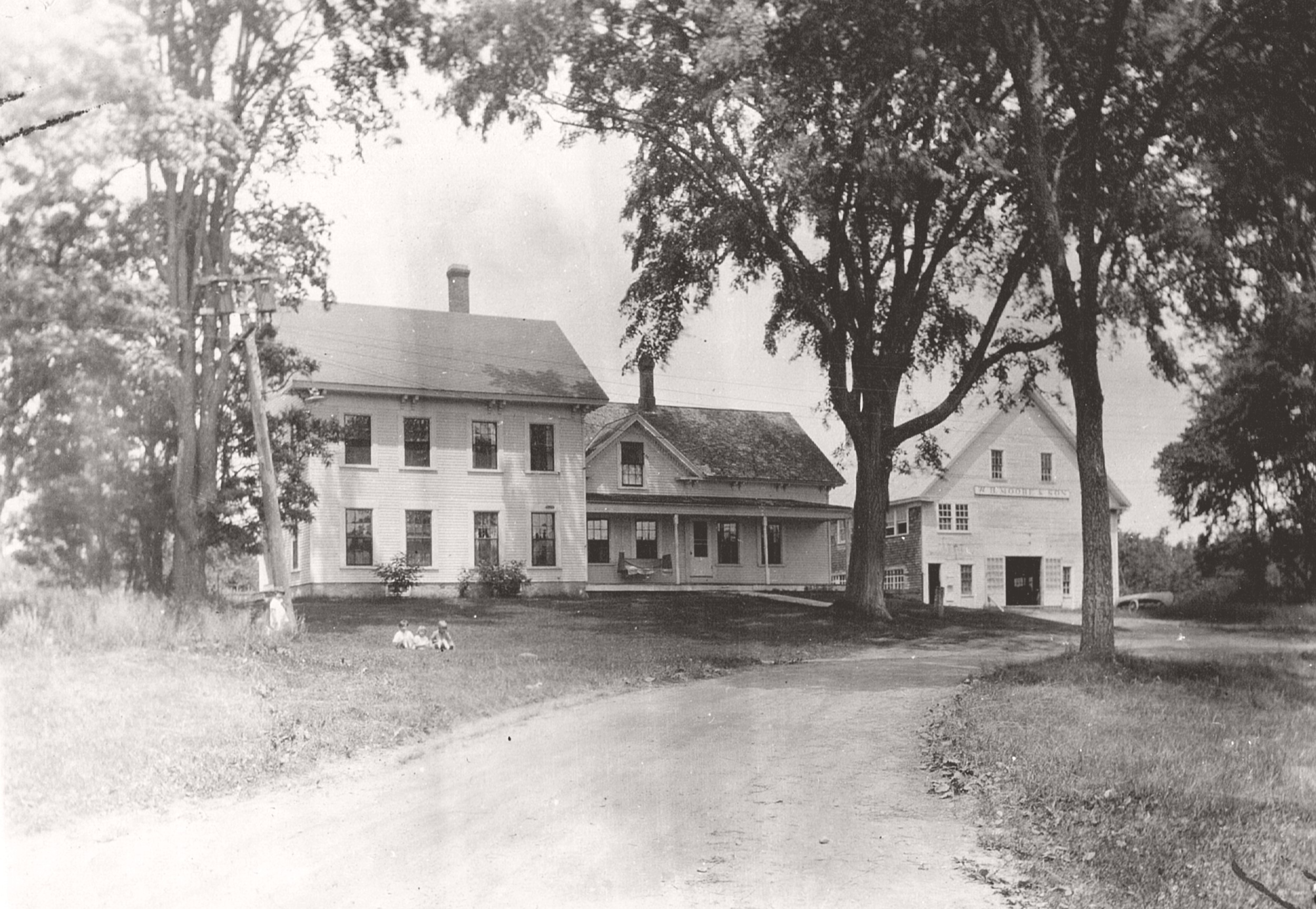
Walter H. Moore House with W. H. Moore & Son Woodworking Mill
*

W. H. Moore & Son Woodworking Sign
(Donated)
*
Lumber Yards would often mark large freight train shipments of stock with the customer’s name on one of the planks.
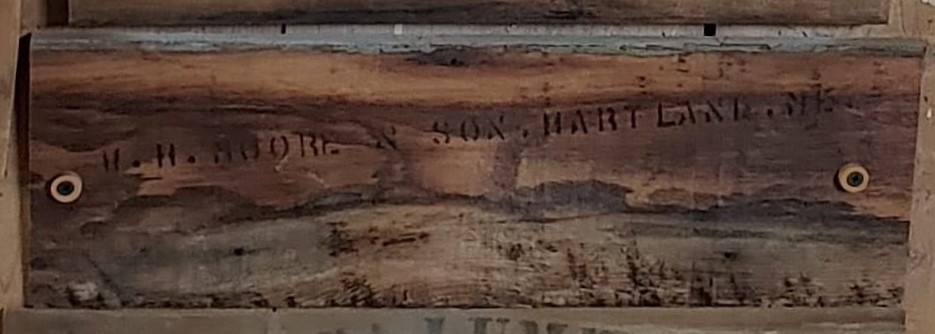
Lumber Delivery for W. H. Moore & Son
(Photo courtesy of Sam Fuller)
*
Following Walter’s sudden death in 1931, Merrill Amasa Moore continued to successfully operate W. H. Moore & Son Woodworking into the early 1970s before retiring marking the end of 170+ years of Moor-Moore Family Wood Mill operations in Hartland.
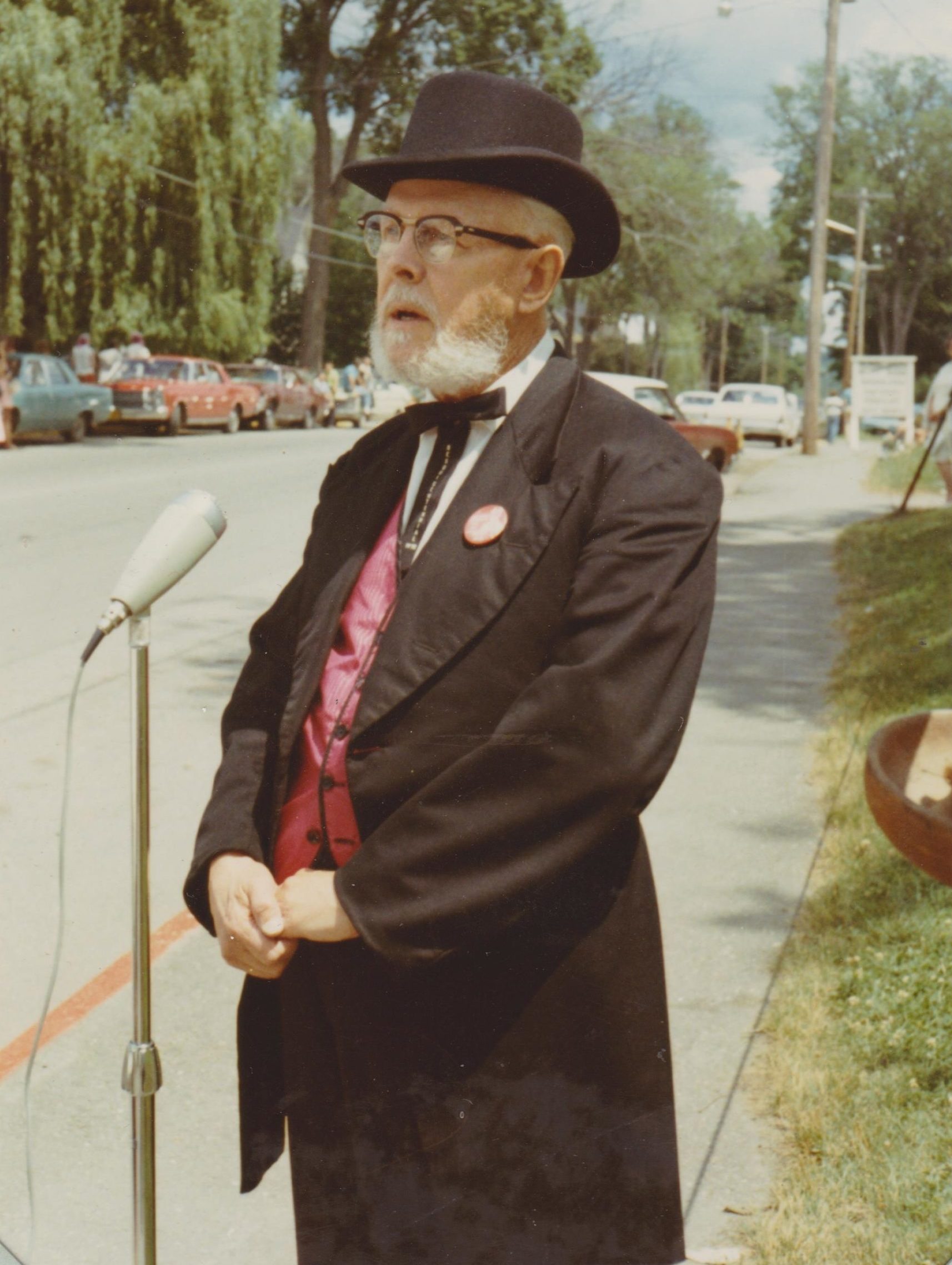
Merrill Amasa Moore – Sesquicentennial Chairman – 1970
*
Harold A. Emery and his wife Leona L. Cyr were living on North Street at the house behind the former Billings home with their daughters Norma & Hilda when their 2 sons Harlan and Clyde were born there in 1926 and 1932, respectively. The house would be sold during the Great Auction of 1932 to Thomas Randlett as noted below.
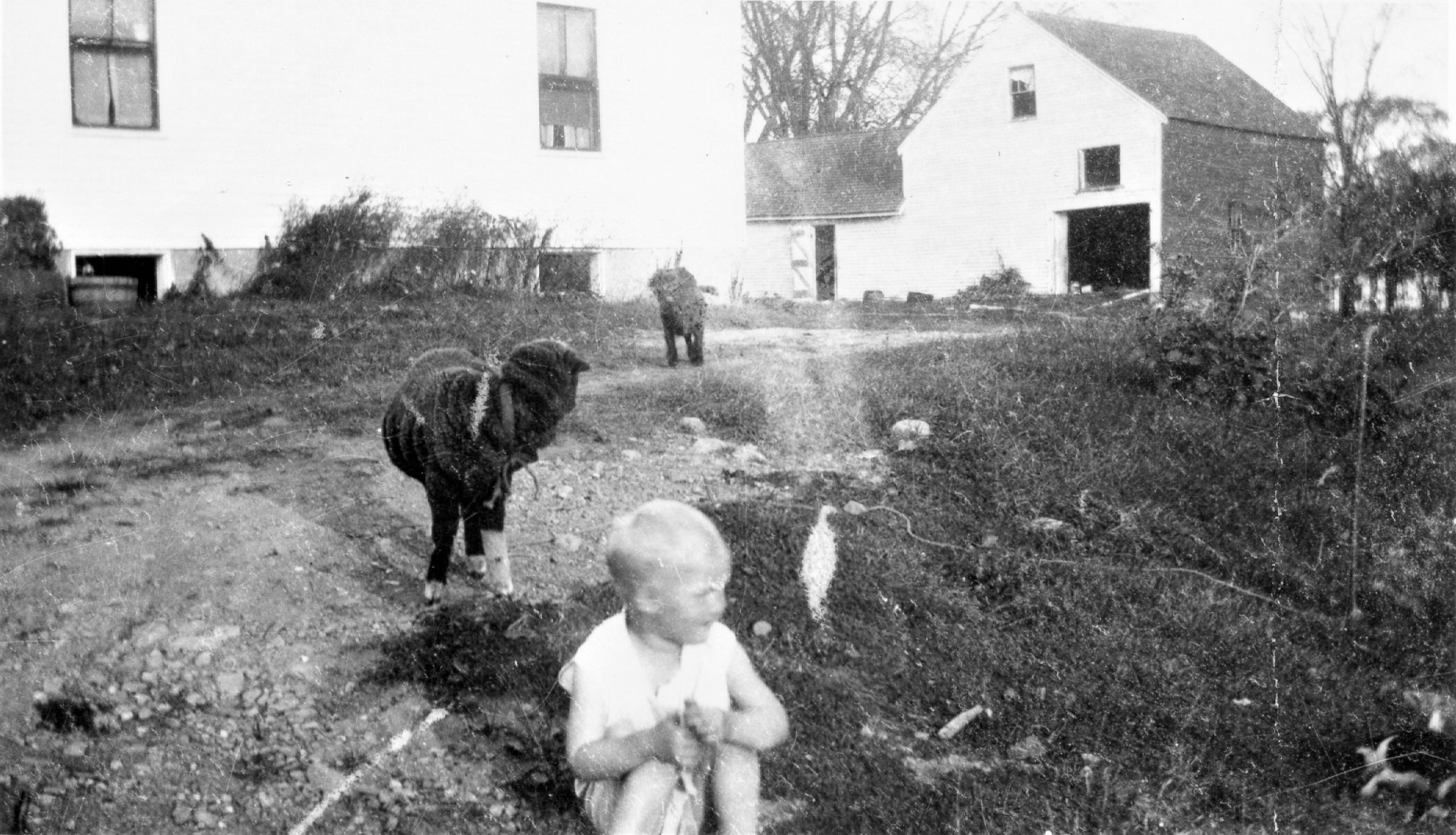
Harlan Emery next to his parents’ home on North Street – c1929
(Photo courtesy of Harlan Emery)
*
Harlan told us the story of Dr. Charles A. Moulton arriving at their residence in his Model T fitted with a winter conversion kit to deliver Clyde in February of 1932 by driving up to their house through the snow next to the former Billings barn from Upper Mill Street.
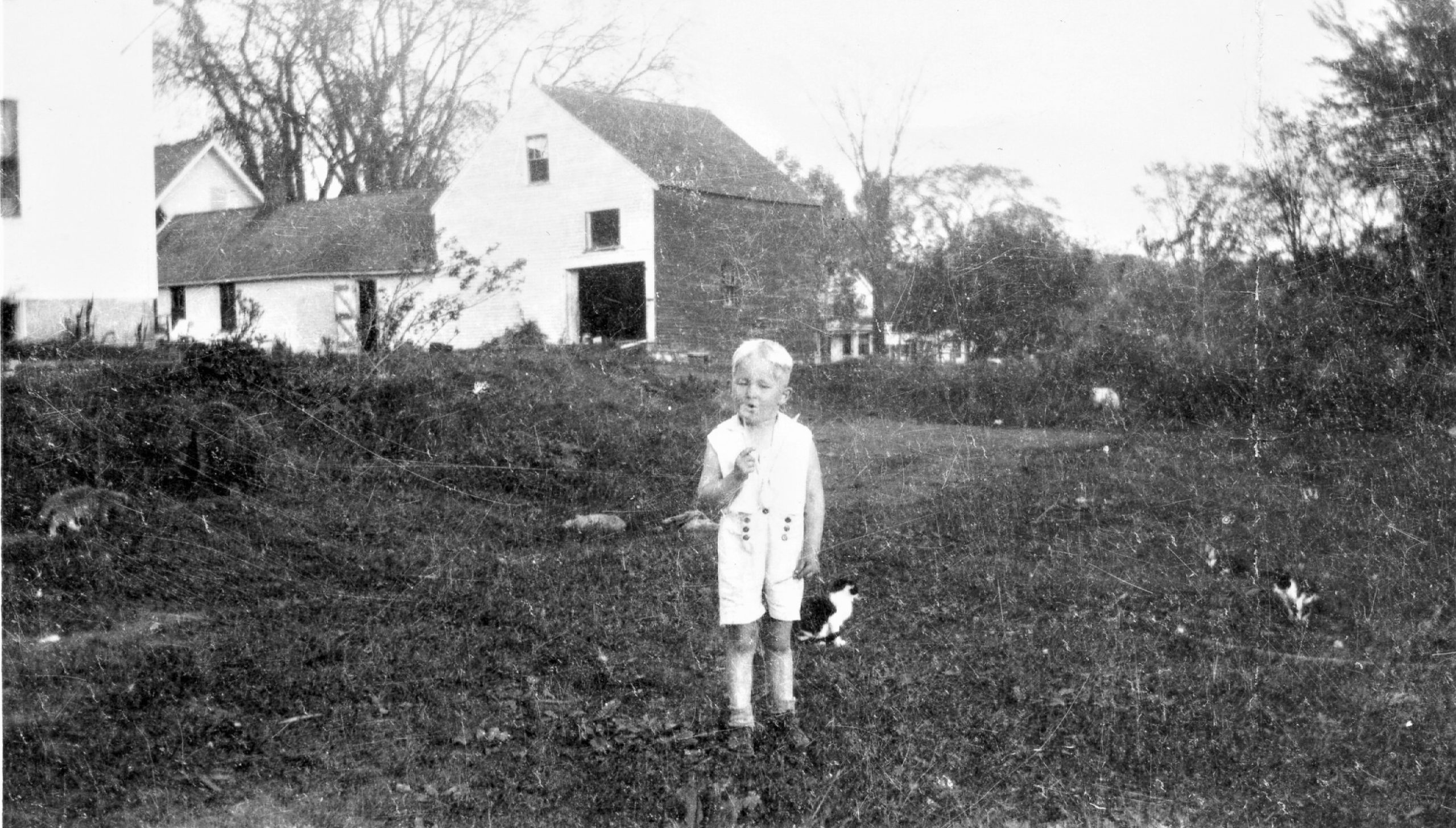
Harlan Emery next to his parents’ home on North Street – c1929
(Photo courtesy of Harlan Emery)
*
Although we do not have a photo of Dr. Moulton’s modified Model T, a similar restored model is displayed at Cole’s Transportation Museum.

Model T with Winter Conversion Kit
(Photo courtesy of Cole’s Transportation Museum, Bangor)
*
Following the American Woolen Company bankruptcy filing in 1932, much of the vast real estate holdings it had purchased in Hartland from the former Linn Manufacturing Company & Archibald Linn Estate were sold off at the Great Auction held on December 2, 1932.
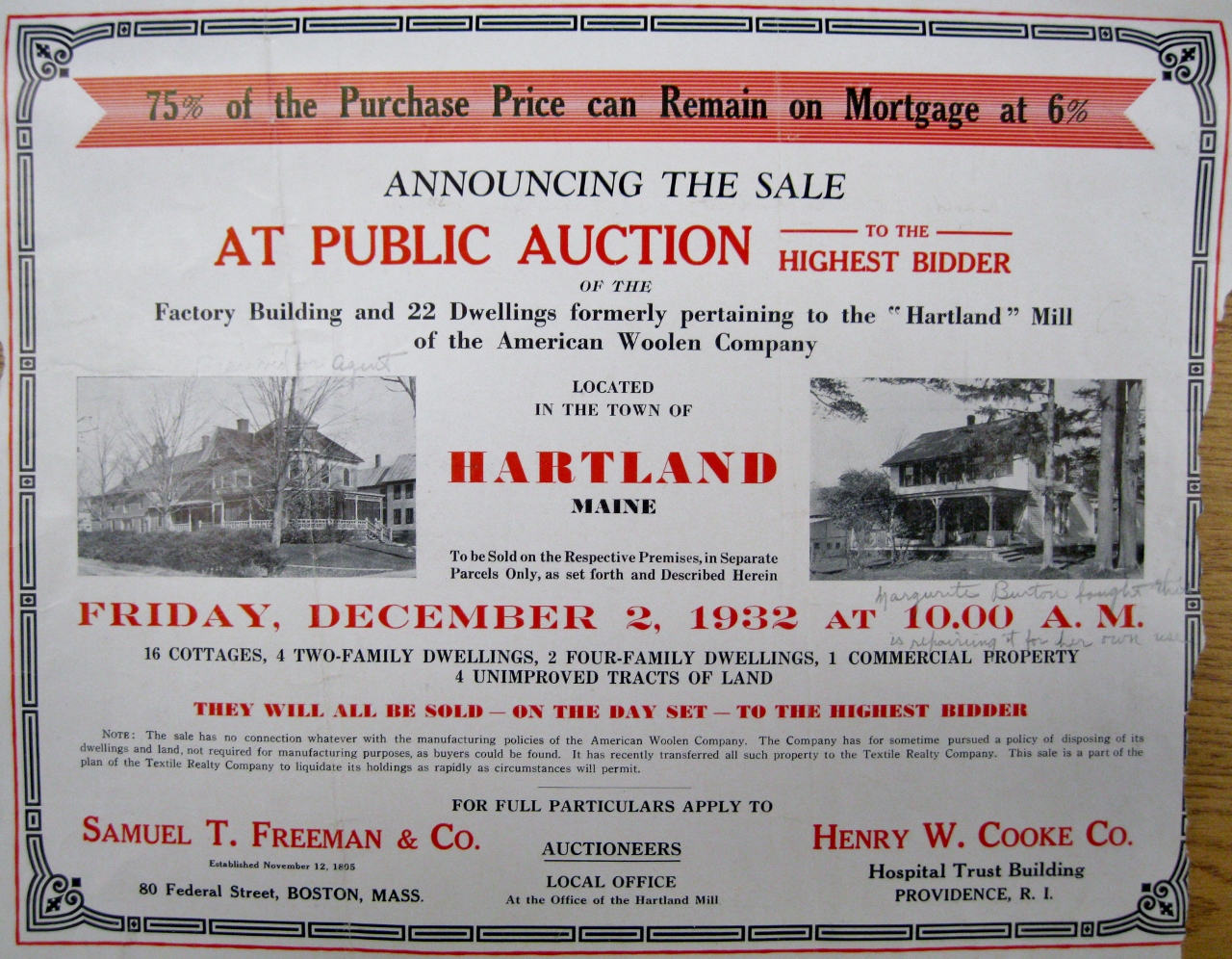
Front Page of Brochure – Great Auction of 1932
(Photo courtesy of Wayne Libby)
*
The auction included several buildings and properties on North Street which had been owned by Greenville Shaw while operating his tannery and sold to the Linn Manufacturing Company in 1898. Those properties are seen below from the original auction drawings & descriptions for Lots 23, 24 & 25.
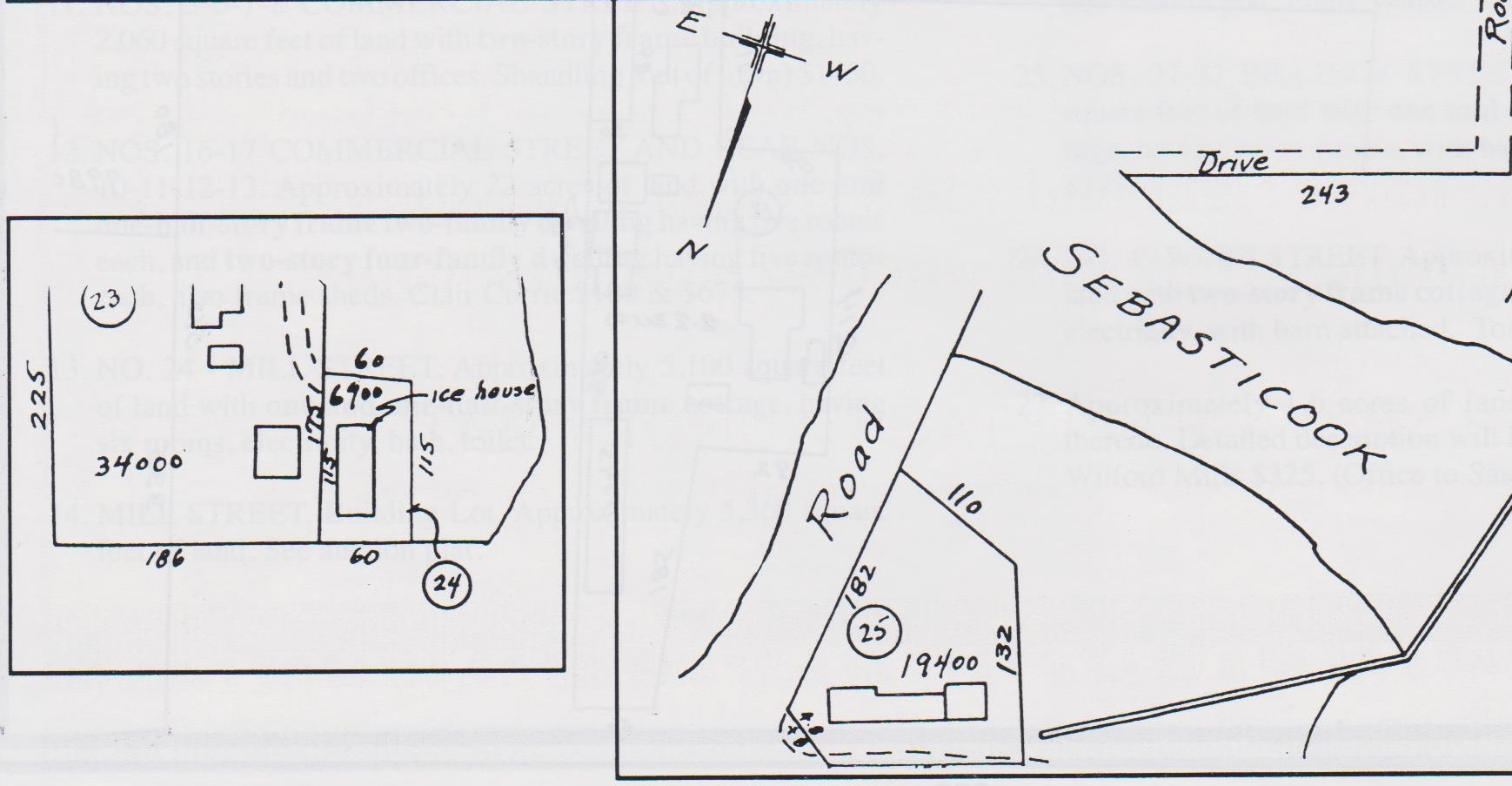
Lots 23, 24 & 25
*
23. BILLINGS STREET (North Street): Approximately 34,000 square feet of land with one and one-half-story frame two-family dwelling having seven rooms to each family, electricity, baths, also frame barn. (Purchased by Thomas Randlett for $350)
24. BUILDING LOT (North Street): Approximately 6,900 square feet of land. See auction plot. (Purchased by Frank Withee)
25. NOS. 21-22 BILLINGS STREET (North Street): Approximately 19,400 square feet of land with one and one-half-story frame cottage having seven rooms with barn attached. (Purchased by Mrs. Earle Stanhope for $375) Original Josiah Billings Home
*
In 1933, Merrill & Bertha Moore built a new home on North Street just beyond the W. H. Moore & Son Woodworking mill seen below in the background.
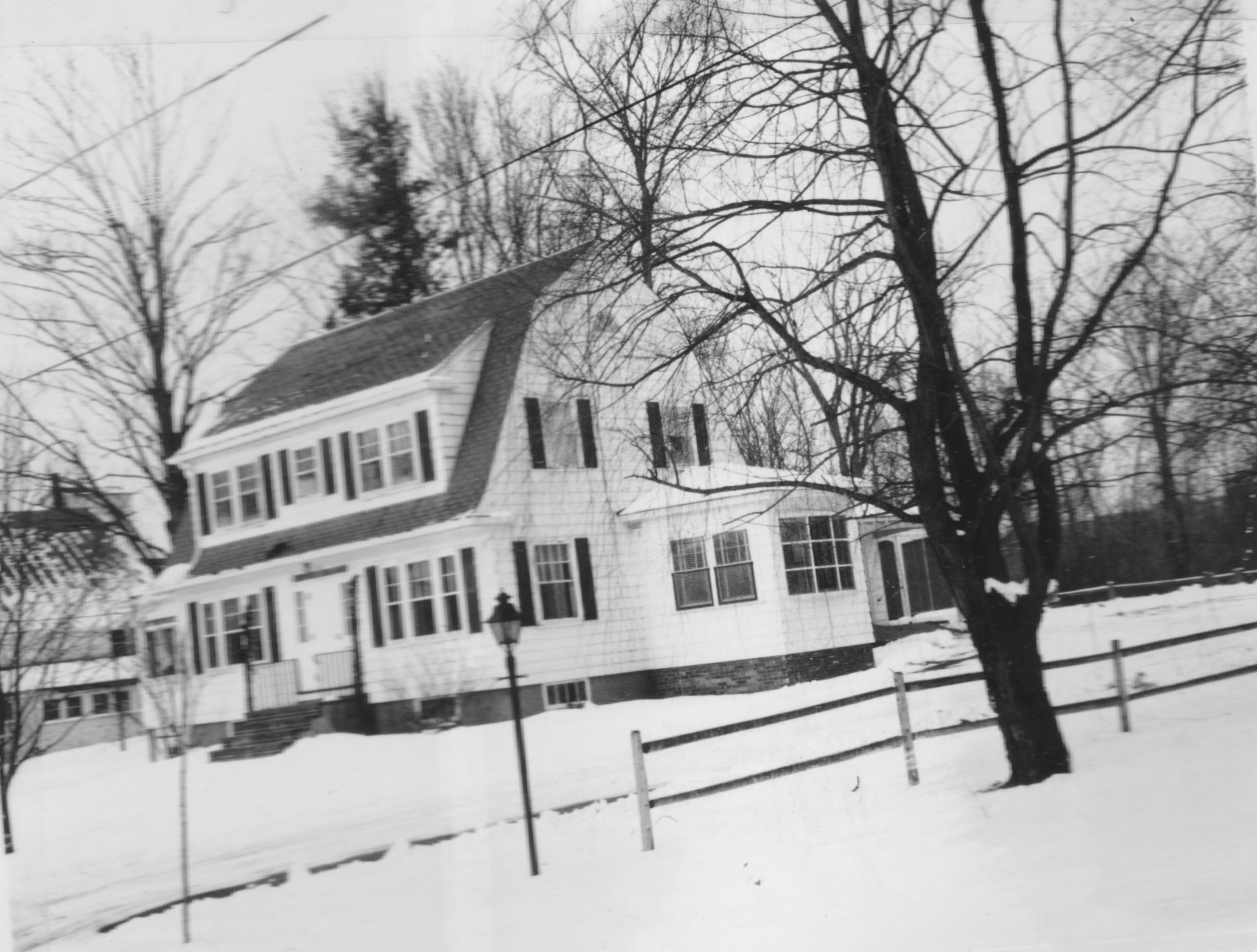
Merrill & Bertha Moore North Street Residence – 1975
*
House Ownership by Deed Name on North Street in 1943.
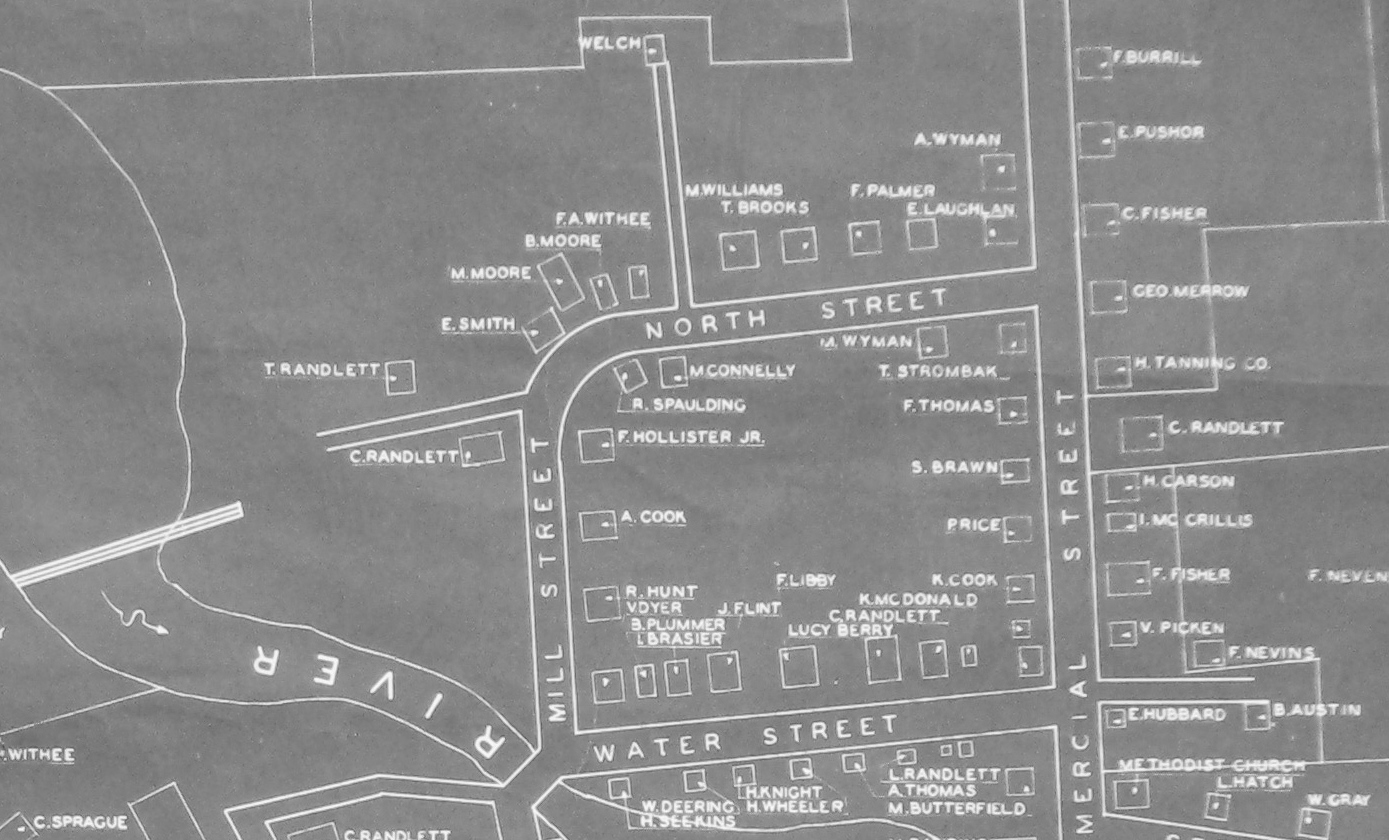
Hartland Village – 1943
*
As noted in the 1943 Map, the 5 houses below were owned by (L-R): Calvin Milton Williams, T. Brooks, F. Palmer, Unknown, E. Laughlin.
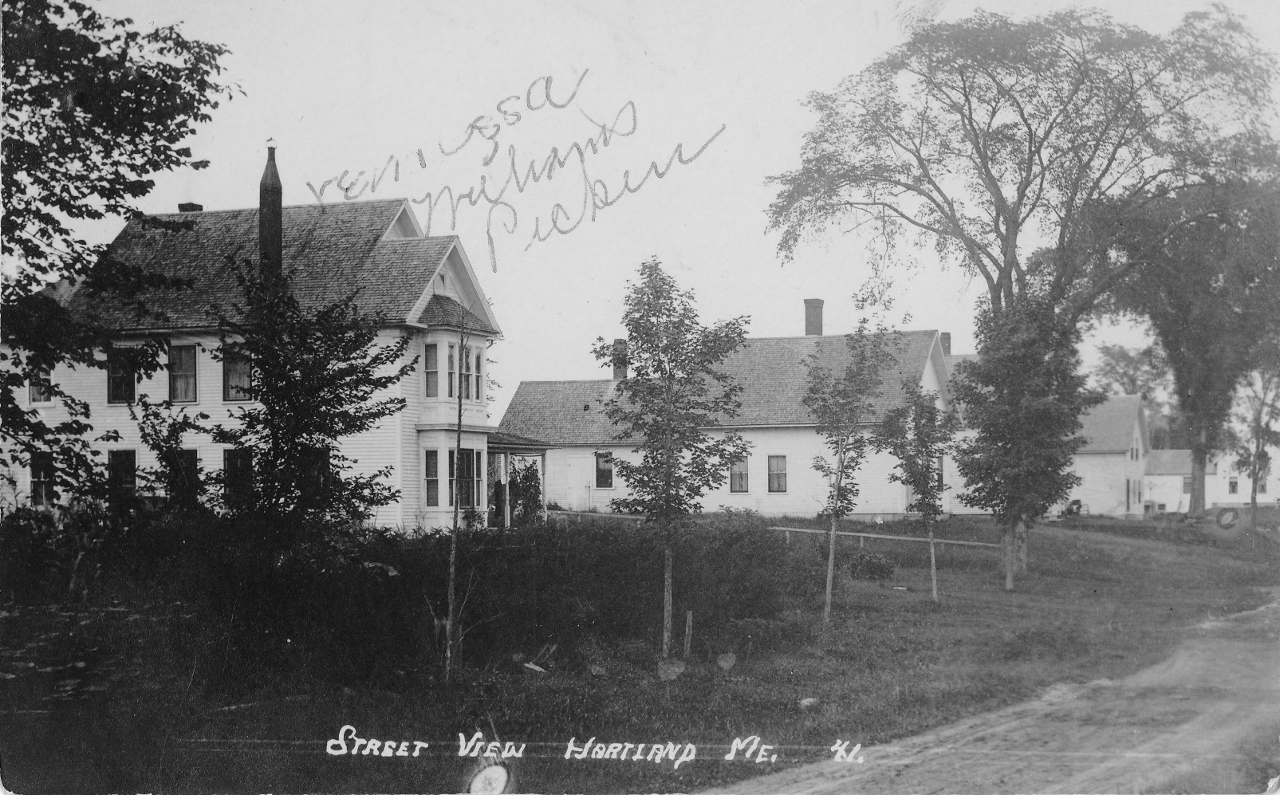
Northeastern Side of North Street looking toward Commercial Street
*
Frank Hollister, Jr house at the time on the left with former Josiah Billings house on the right.
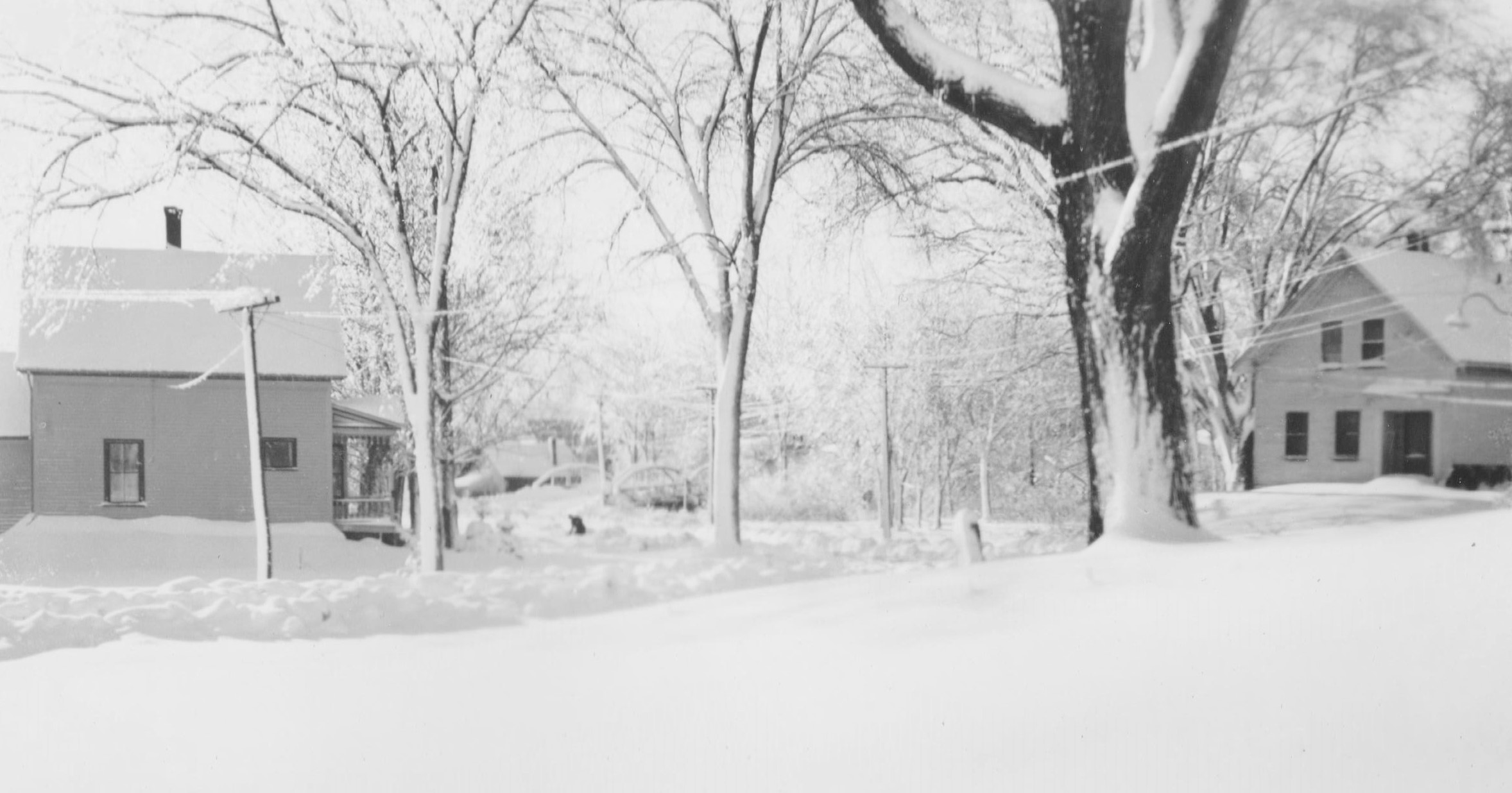
Corner of North Street looking across to the Mill Street Bridge – 1945
(Photo courtesy of Maynard Ross)
*
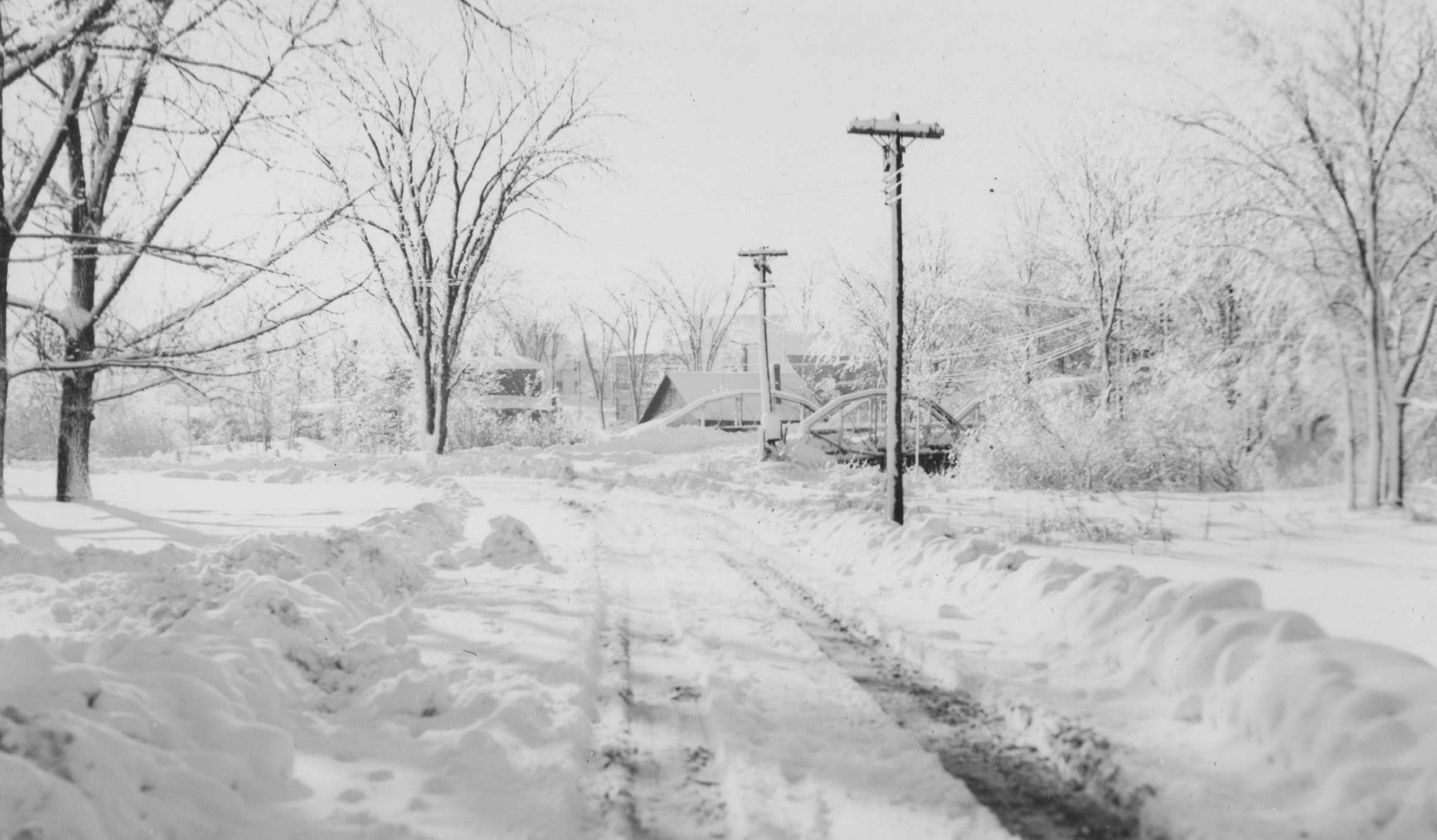
Near the corner of North Street on Mill Street looking across to the Mill Street Bridge – 1945
(Photo courtesy of Maynard Ross)
*
By 1951, Arthur Ray Spaulding and his wife Cassie Belle Fisher opened a flower, potted plants and seeding business operating as Spaulding’s Greenhouse at their home on the corner of North Street and Mill Street.
*
In September of 1974, Helen Moor Smith (1889-1983) deeded the North Street house and property she had inherited from her mother Florence (Moor) Smith to her first cousin Merrill Moore and his wife Bertha. Prior to the transfer, a mutually agreed upon formal document was written noting the intention for Merrill to sell the property to Linwood & Shirley (Vigue) Humphrey and establish a trust fund from the sale to support Helen until her death. Another stipulation included in transfer agreement and noted in both deeds, “Excepting and reserving certain lifetime rights to Helen Moor Smith to the use of a room in the dwelling house, said use to be for her visitation on those occasions when she may choose to visit.” In October of 1974, Linwood & Shirley formally purchased the Moor/Moore homestead from Merrill & Bertha.
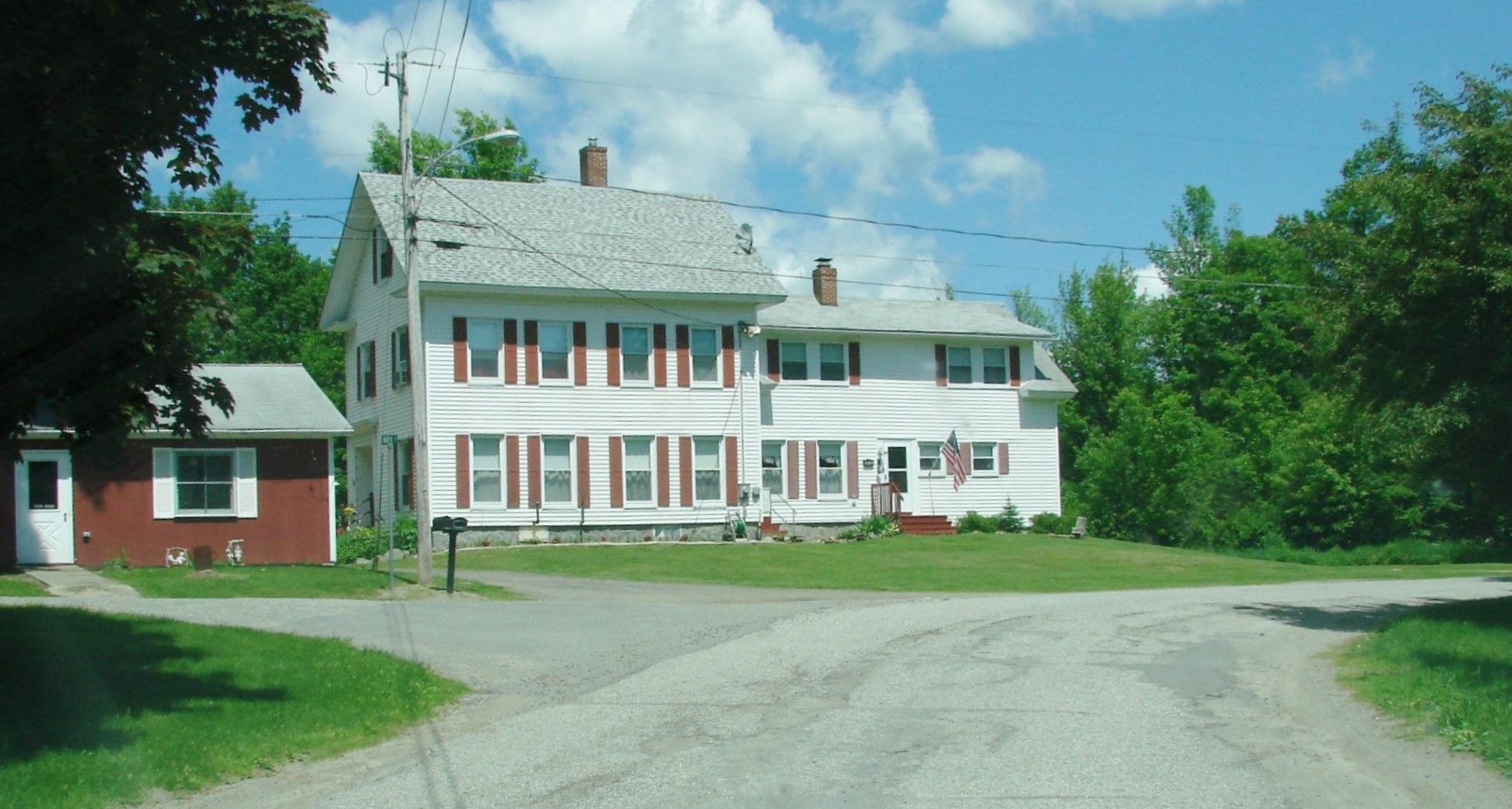
Original Amasa J. Moor House purchased by Linwood & Shirley (Vigue) Humphrey – 2012
*
As part of the 1987 Lower Dam Project, a dike was installed at the secondary Great Moose Lake outlet which had fed the stream passing under the North Street & Water Street bridges effectively ending the flow of water. Soon after, the bridges were permanently removed from their respective streets.
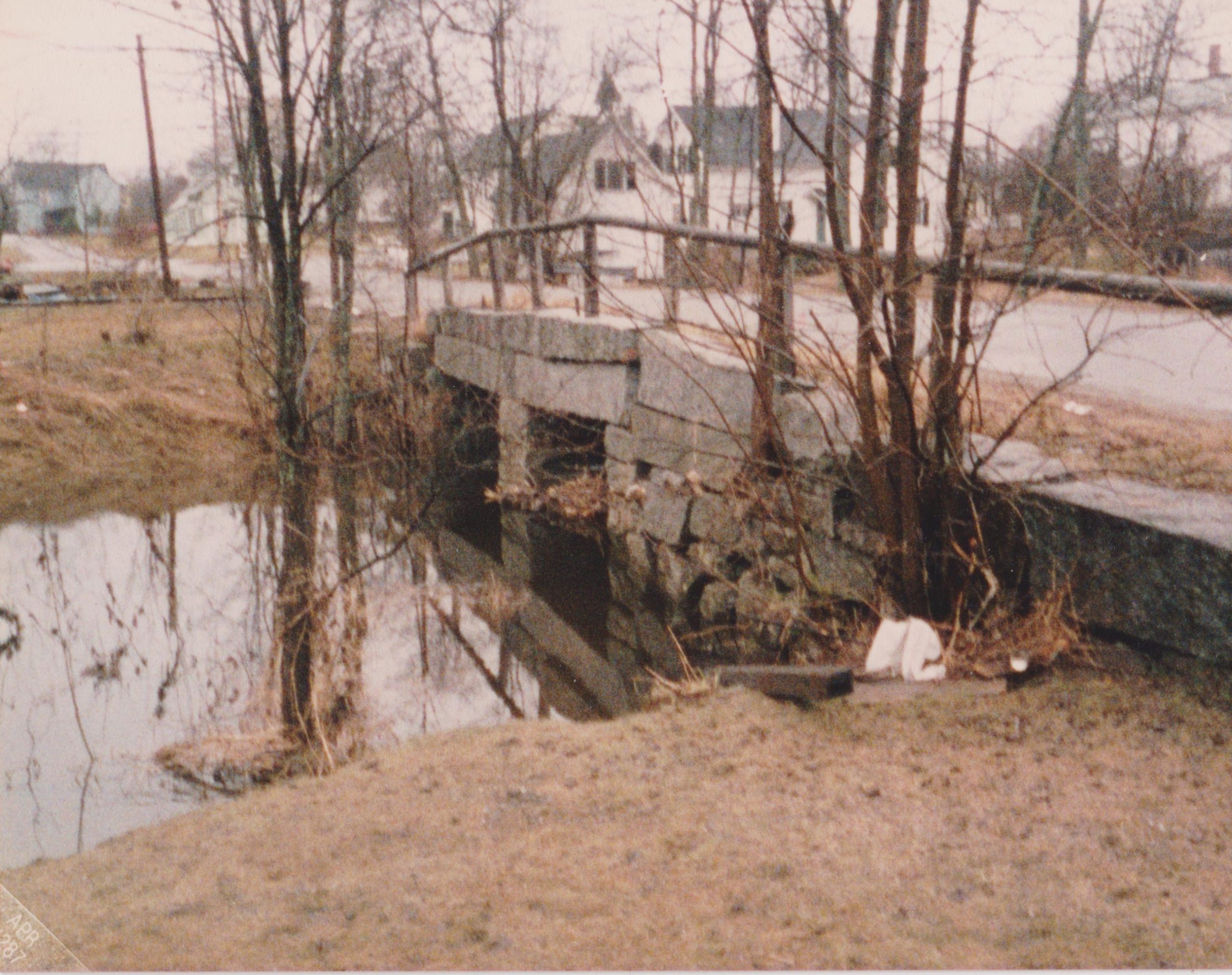
North Street Bridge – 1987
*